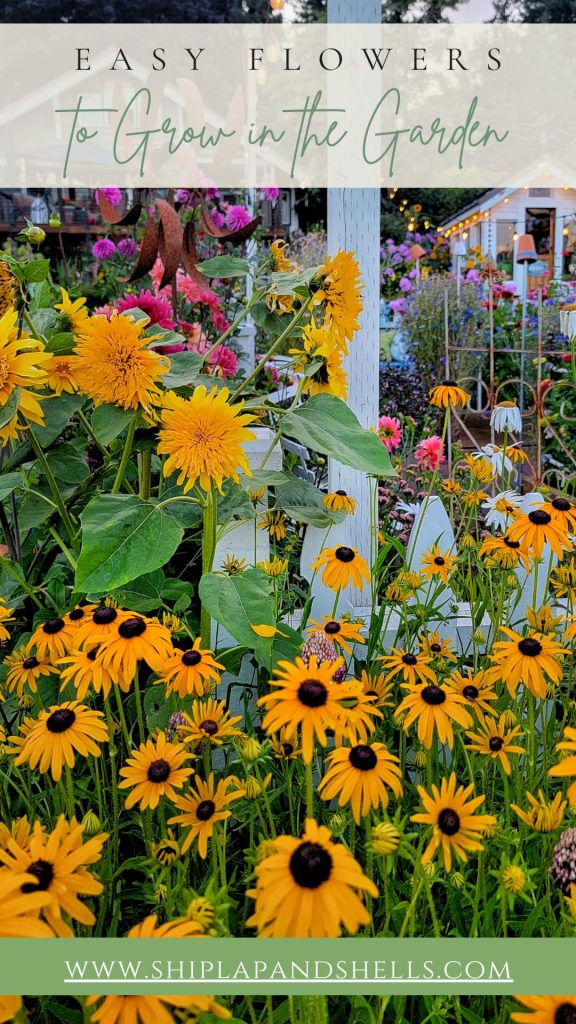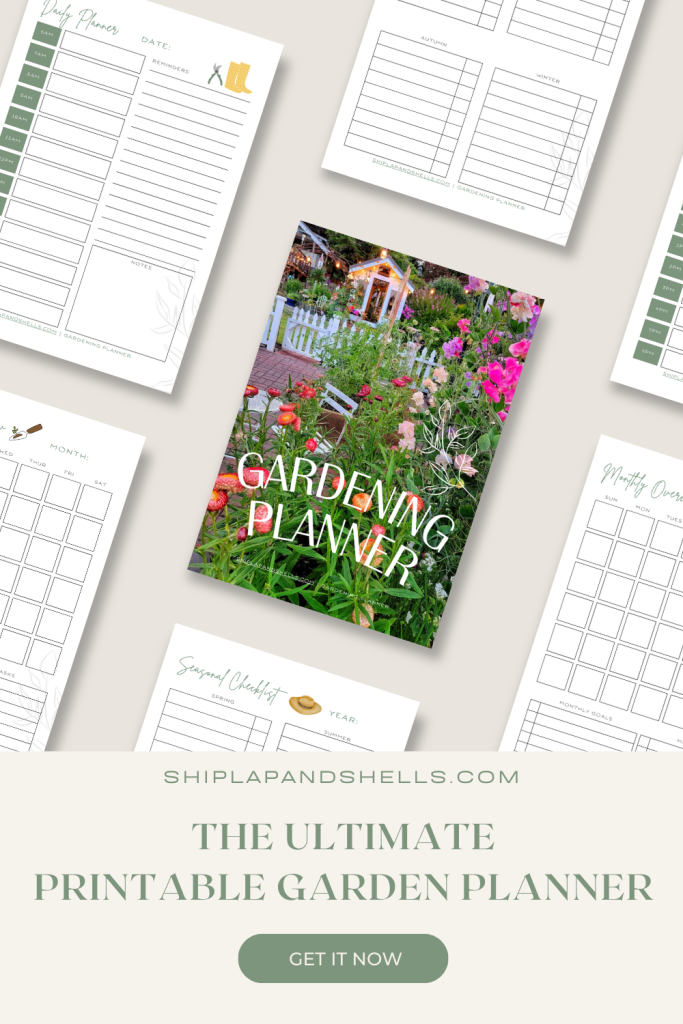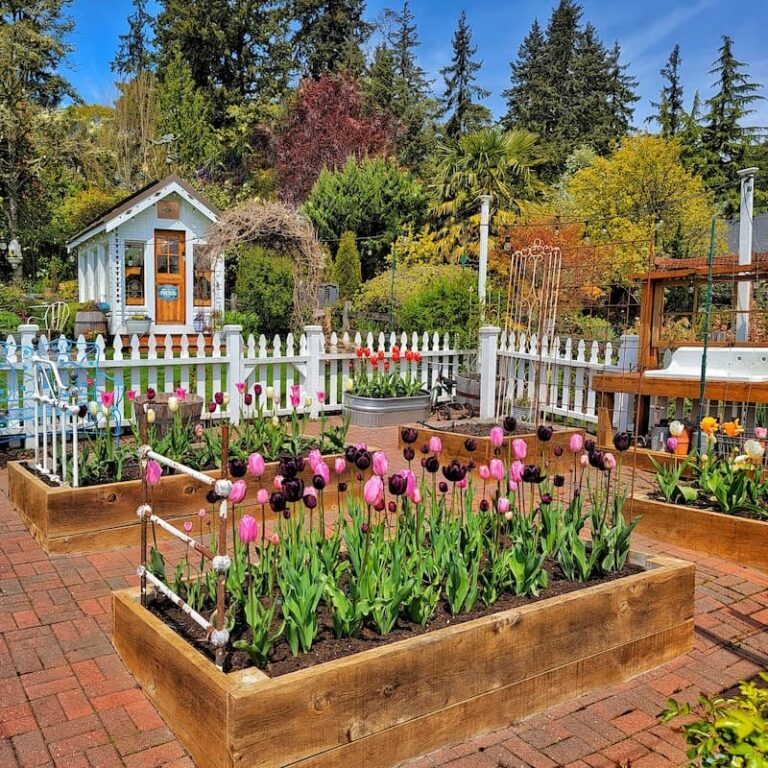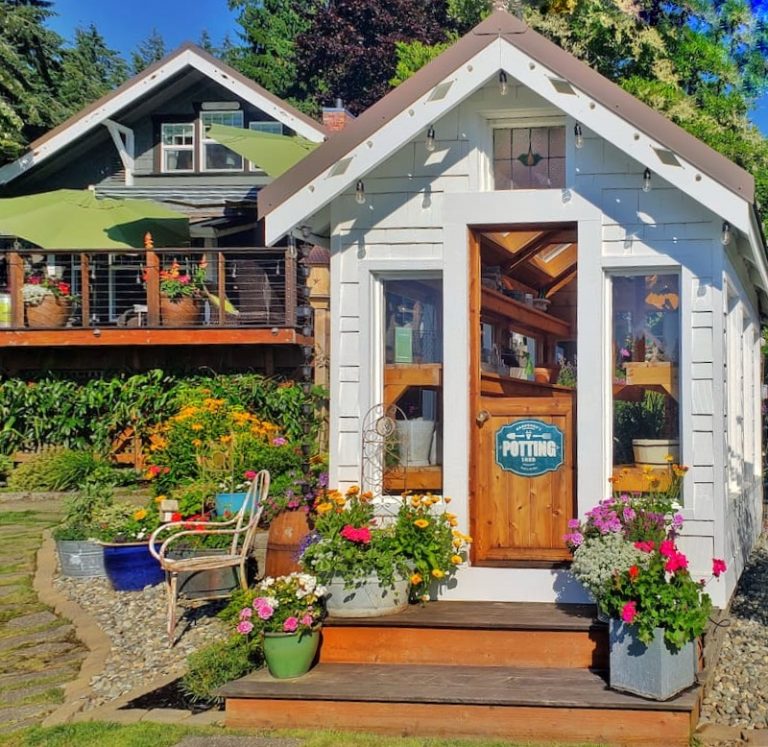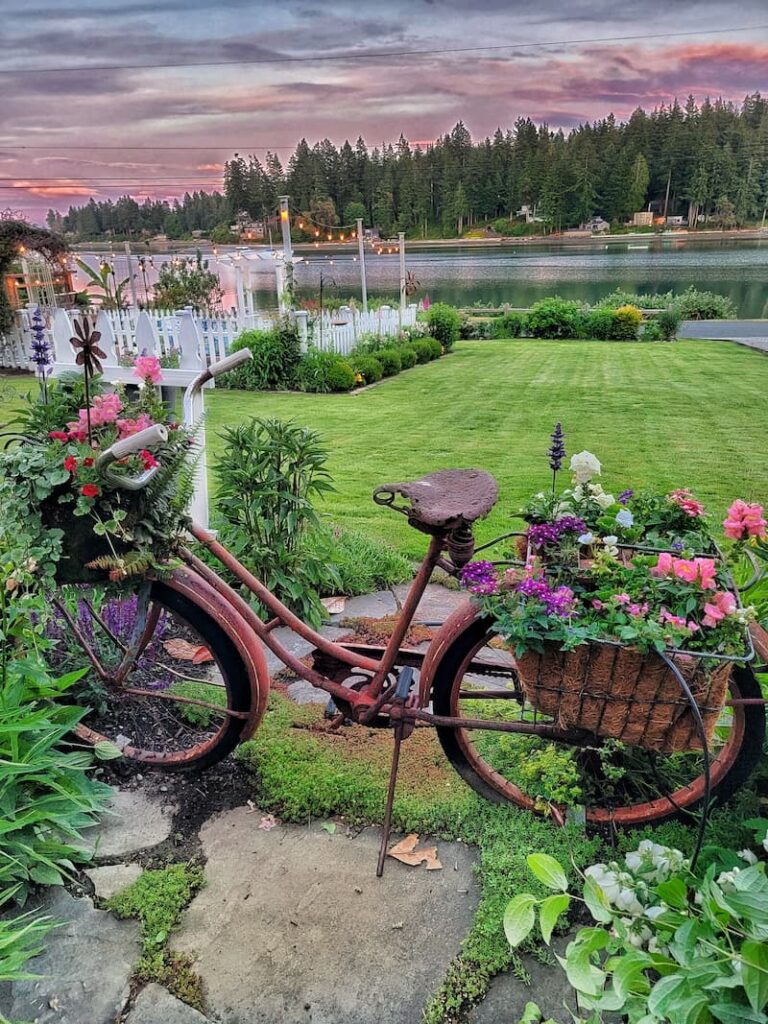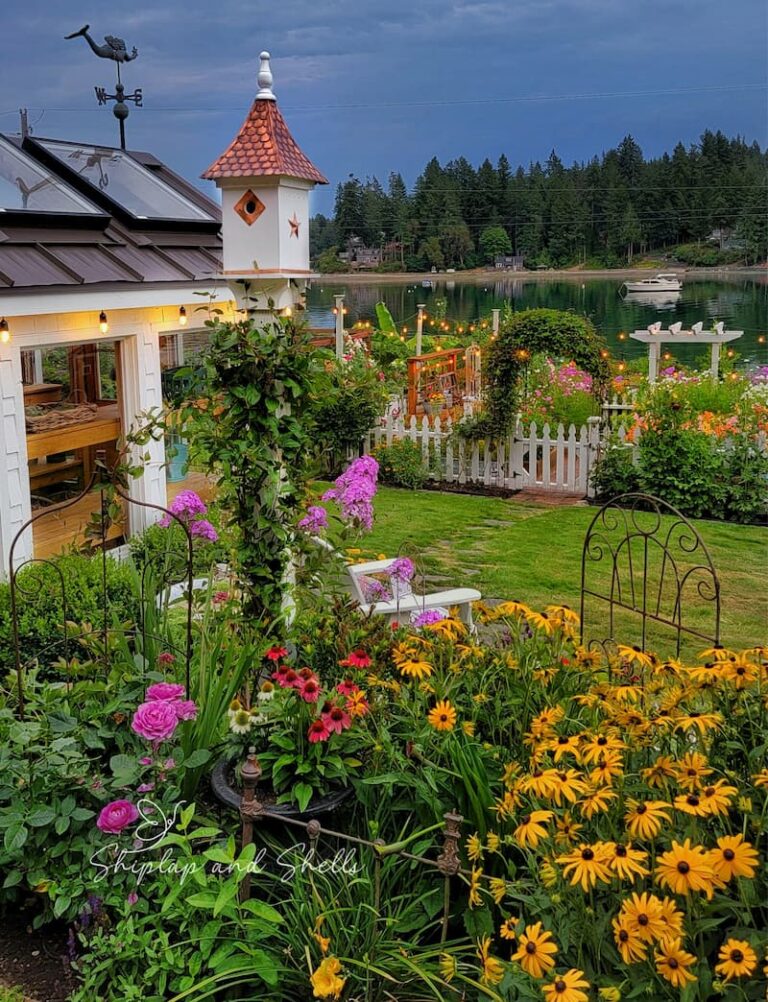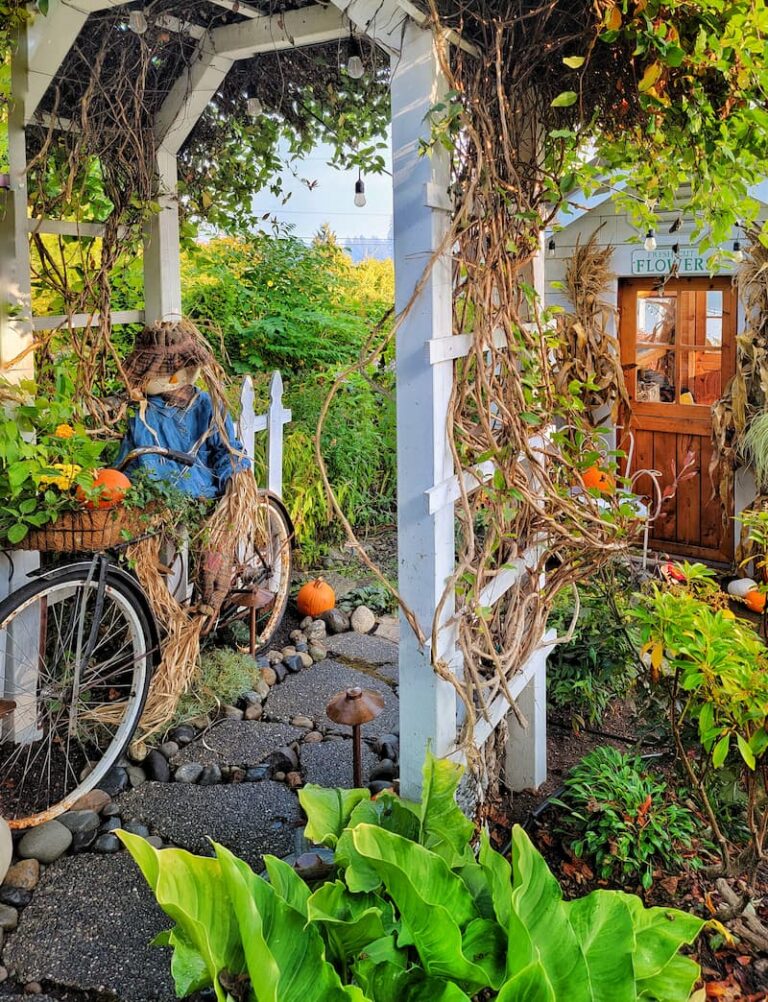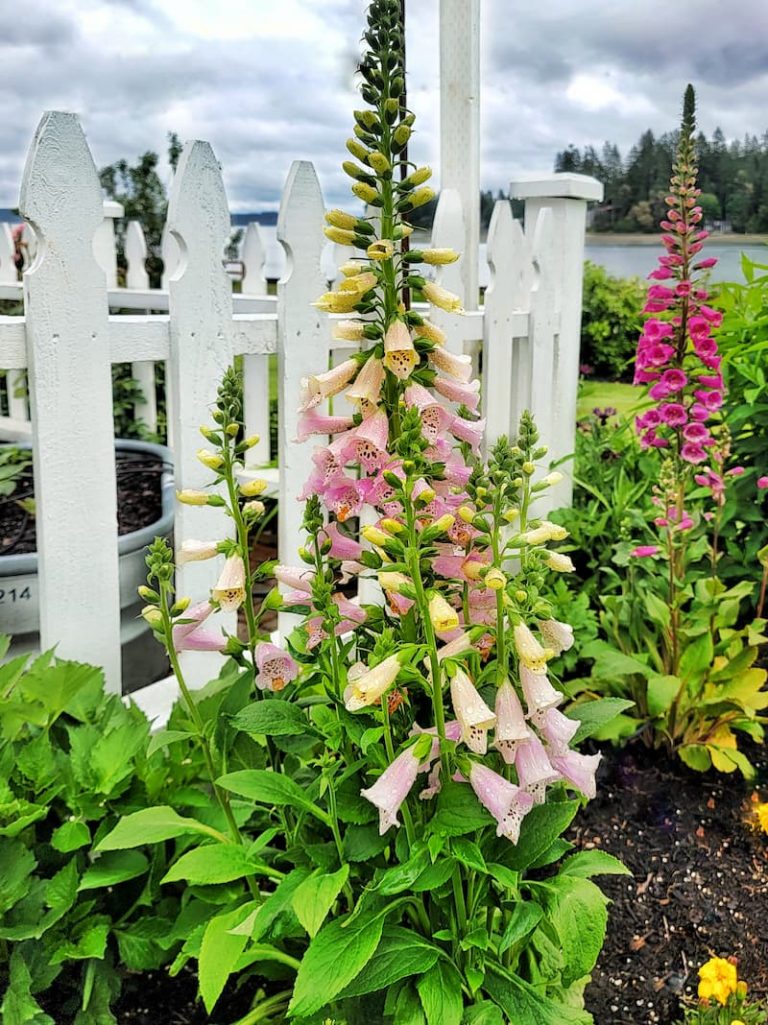Easy to Grow Flowers to Plant in Your Garden for Beginners
Are you thinking about growing a flower garden but need help deciding which easy flowers to start with? In this blog post, I’ll share the best plant choices for beginner gardeners so you won’t have to worry about having a brown thumb in the garden again!
I remember when I first started my garden twelve years ago. It was so exciting, and I had so many plans and ideas. The only problem was that I didn’t have a clue about what flowers to plant as a gardener with little experience.
I made some big mistakes (I mean some real whoppers) in the first couple of years because I didn’t start with easy-to-grow flowers in my garden. These plants don’t take much to keep alive and thriving. Once you get more gardening experience and confidence, you can move on to more challenging flowers to grow.
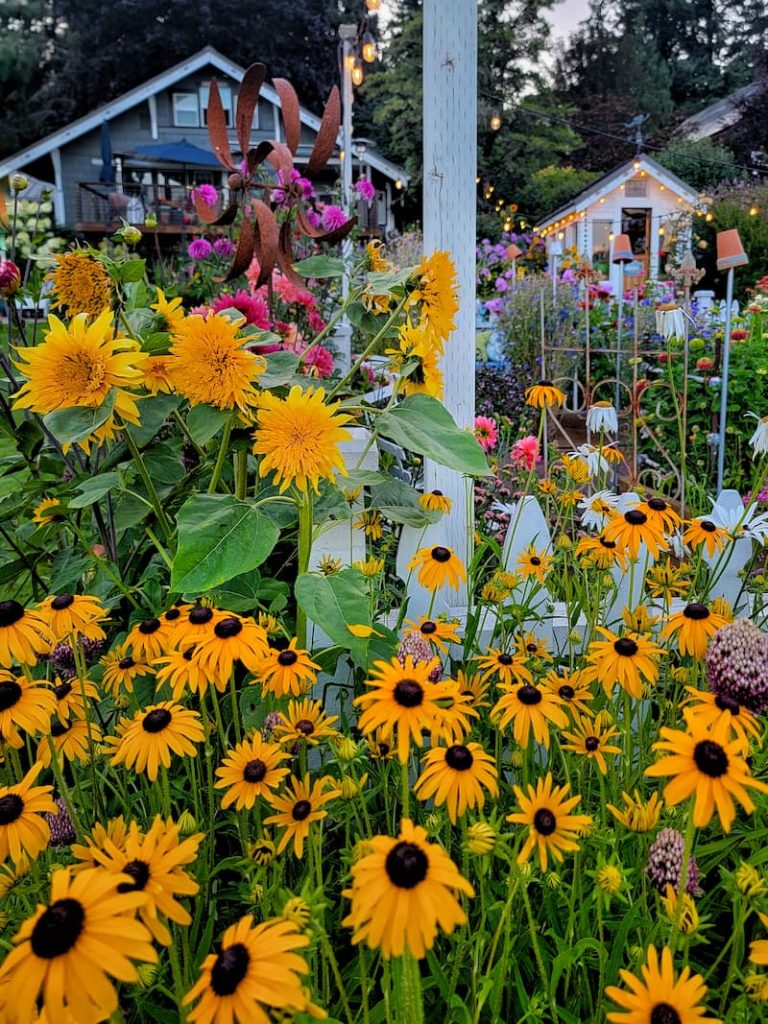
As an Amazon affiliate, I earn from qualifying purchases at no extra cost to you. My blog contains other affiliate links for your convenience as well. Click here to read my privacy policy.
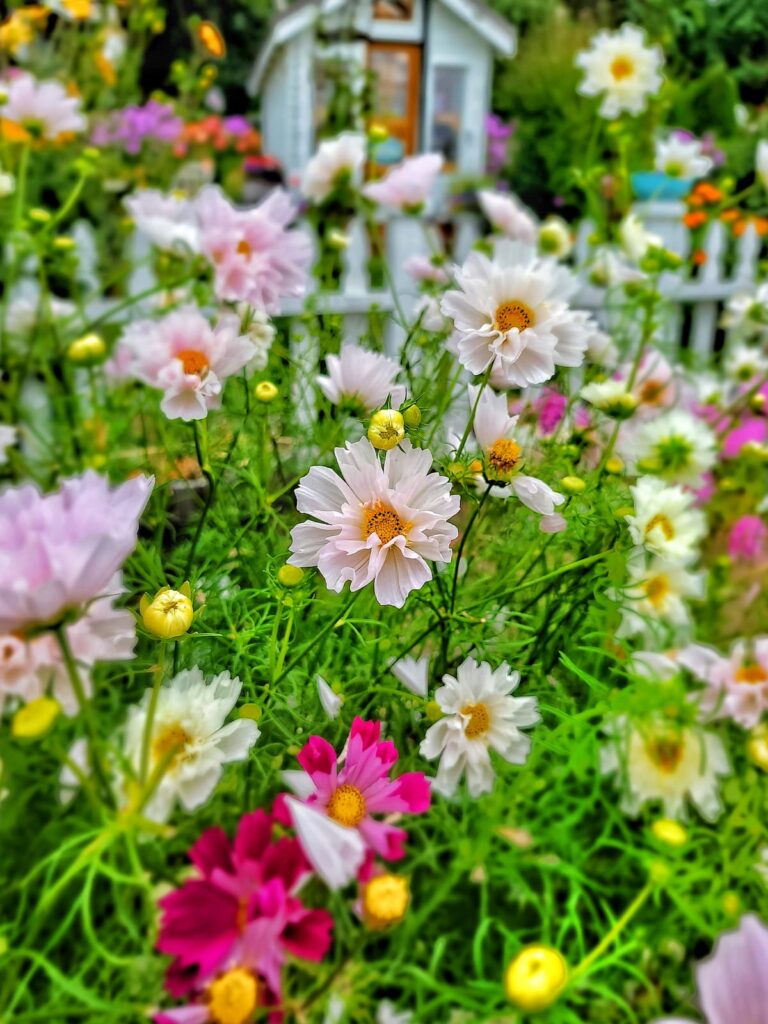
What Flowers Are Best for Beginners?
Several elements contribute to being an “easy to grow” flower. Here are some key factors that define an easy-to-grow flower in the garden.
Factors to Consider When Choosing Easy-to-Grow Flowers
Climate and Hardiness
Easy-to-grow flowers are generally hardy and resilient. They can withstand common garden challenges like fluctuations in temperature, imperfect soil conditions, and irregular watering.
Low Maintenance
Flowers considered easy to grow usually require minimal upkeep. This includes less frequent needs for pruning, deadheading, and fertilizing.
Adaptability
These easy-to-grow flowers can thrive in a variety of climates and soil types. They can adapt to different sunlight, moisture, and soil conditions in a cool northern or warm southern climate.
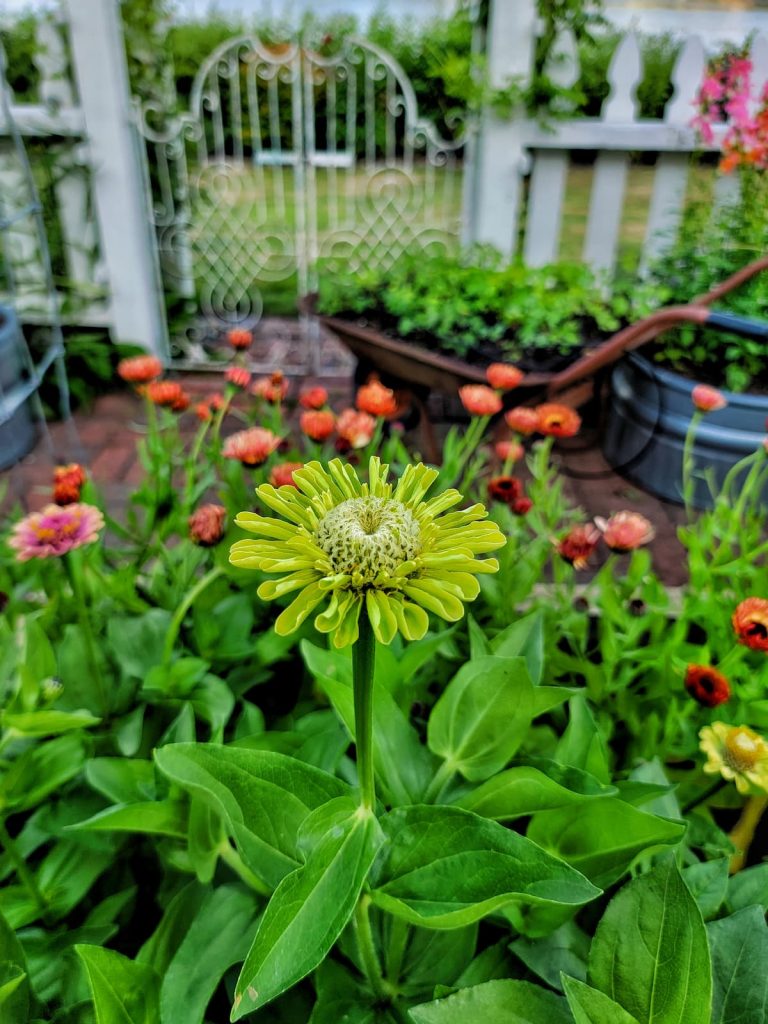
Tolerance to Neglect
While no plant should be completely neglected, those that can survive occasional lapses with watering or feeding without significant harm are ideal for beginners.
These types of flowers are more likely to recover from periods of neglect.
Disease and Pest-Resistant
An easy-to-grow flower typically has a natural resistance to common pests and diseases. This means they’re less likely to need chemical treatments or special interventions.
Quick Growth and Blooming
Flowers that grow and bloom quickly provide immediate gratification, which can encourage new gardeners.
Propagation Ease
Easy-to-grow flowers often propagate by self-seeding in the garden or through cuttings or division, allowing gardeners to expand their gardens without constant new purchases.
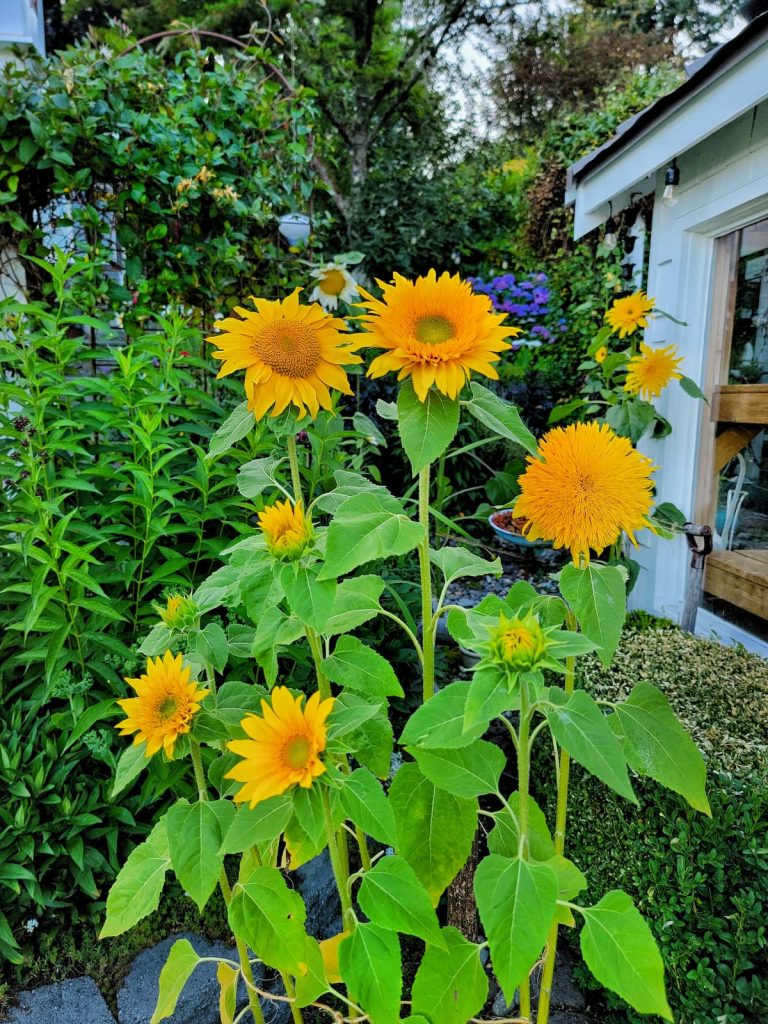
26 Easy to Grow Flowers for Beginners
Your gardening journey should be all about connecting with nature and watching your beautiful flowers come alive. What it shouldn’t be is overwhelming and frustrating.
That’s where this guide comes in.
I’ll show you the most forgiving and low-maintenance flower options to turn your outdoor space into a garden paradise you will enjoy throughout the growing season.
Don’t be overwhelmed by the size of my list. You can look through some of each plant’s benefits and choose what you think will work for you.
If you are a beginner gardener, don’t try to grow too many flower varieties simultaneously. Start with just a few and add to your garden when ready to take on more.
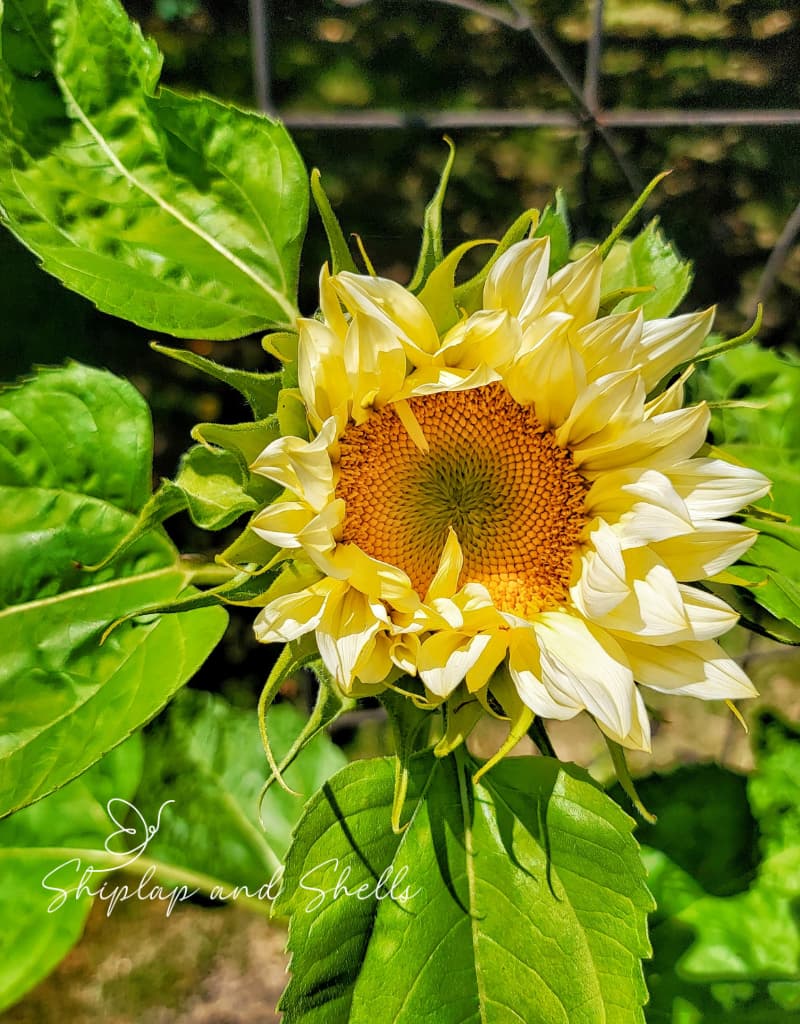
1. Sunflowers
These sun-loving plants are very hardy and grow quickly. Sunflowers require minimal care other than providing them with enough sunlight and water.
I sow seeds when growing my sunflowers yearly, protecting them from the birds until they’re established.
Sunflower Quick Facts
| Typical Bloom Time | mid-summer to early fall |
| USDA Hardiness Zone | 2-11 |
| Sunlight Requirements | at least 6-8 hours of direct sunlight daily |
| Height | 2 feet to over 12 feet tall |
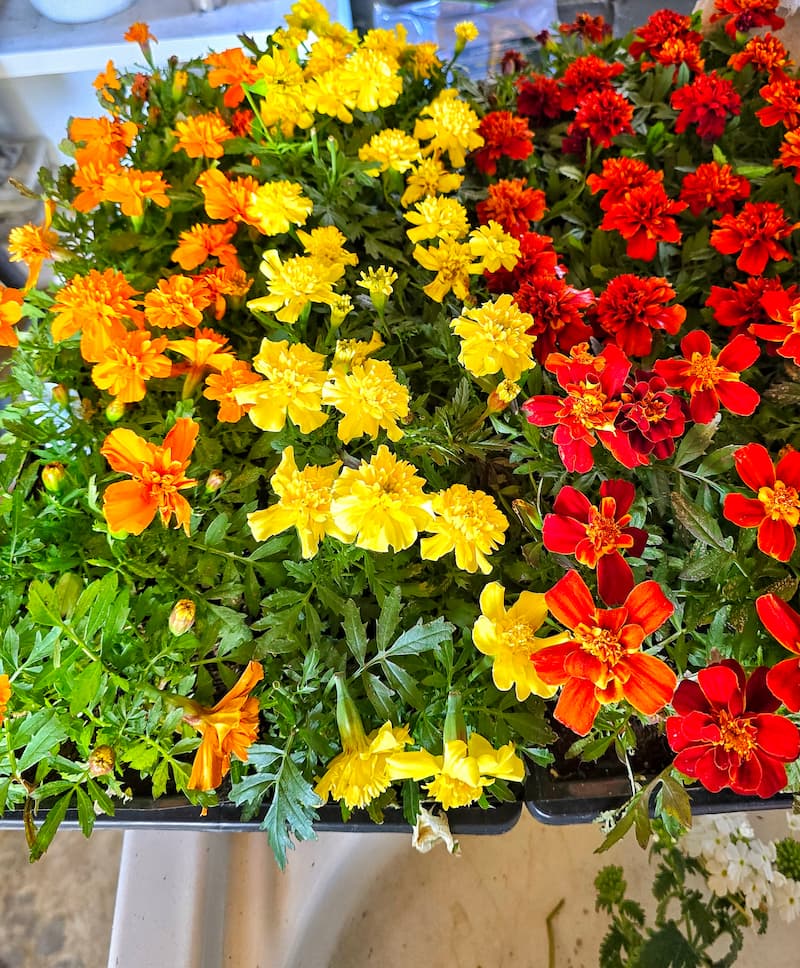
2. Marigolds
Marigolds are particularly easy to grow, making them a favorite among beginner gardeners. They’re also a great companion plant that naturally deters pests, which can be beneficial in mixed vegetable or flower beds.
These annuals, known for their vibrant yellow and orange blooms, can handle tough garden conditions, including hot, dry weather.
Marigold Quick Facts
| Typical Bloom Time | late spring until frost |
| USDA Hardiness Zone | 2-11 as annuals; not frost-tolerant but can handle very hot conditions well. |
| Sunlight Requirements | 6 hours of direct sunlight daily |
| Height | dwarf varieties like the French marigold typically range from 6 to 12 inches tall, while taller varieties, such as the African marigold, can grow from 1 to 3 feet tall. |
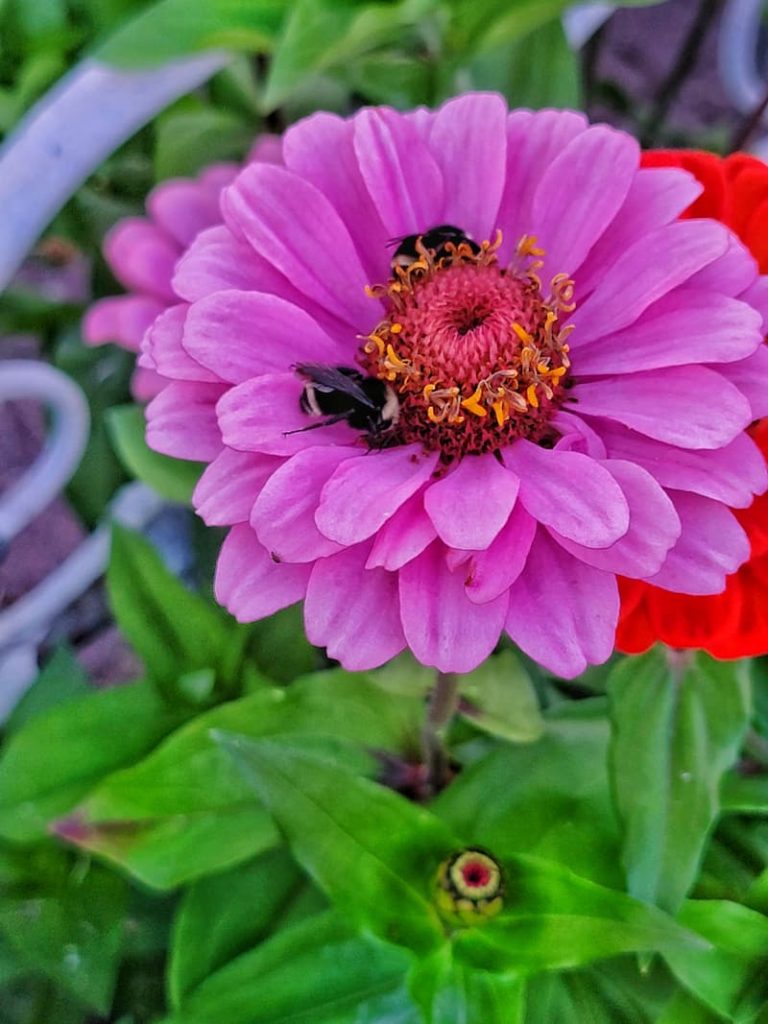
3. Zinnias
These vibrant, colorful flowers come in a variety of colors and can bloom heavily throughout the summer. Zinnias are drought-tolerant plants that attract beneficial pollinators like bees, butterflies, and hummingbirds to the garden.
If you’re looking for great cut flowers, zinnias are the perfect choice. They are the easiest flower for me to grow in my cutting garden and one of the prettiest. I’m growing six varieties of zinnias this year, including Lilliput, Envy, Victorian Wedding, Precious Metals, Persian Carpet, and State Fair Gold Medal Heirloom Butterfly Mix.
Zinnia Quick Facts
| Typical Bloom Time | early summer through first frost |
| USDA Hardiness Zone | 3-10 |
| Sunlight Requirements | 6-8 hours of direct sunlight daily |
| Height | dwarf types might only grow to about 6-10 inches tall, while taller varieties can reach up to 3-4 feet in height |
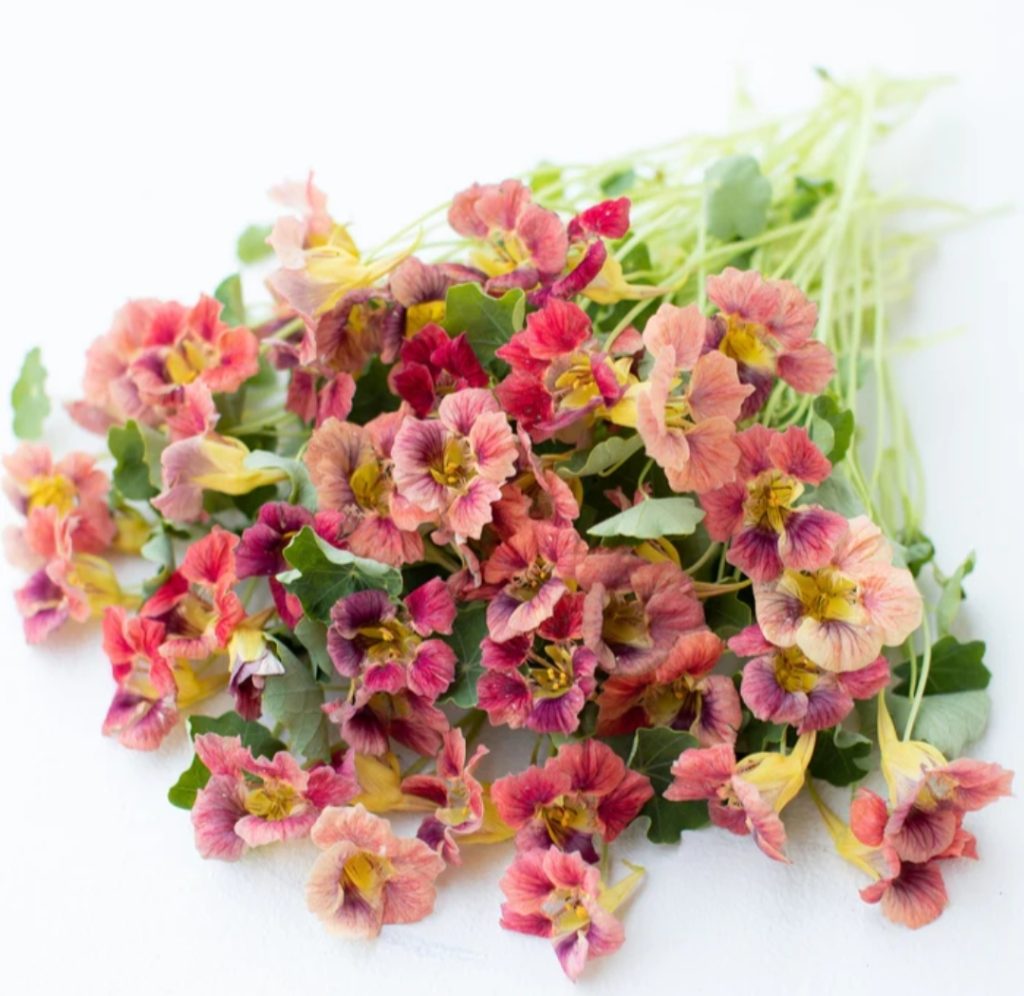
4. Nasturtiums
These versatile flowers are easy to grow and edible, with a peppery flavor.
Nasturtiums can be grown in poor soil and require little maintenance. They also help repel pests from other plants in the garden, making them wonderful companion plants.
Nasturtium Quick Facts
| Typical Bloom Time | late spring through to fall |
| USDA Hardiness Zone | 2-11; they prefer cooler conditions and may struggle in extremely hot climates without some afternoon shade |
| Sunlight Requirements | best in full sun but can tolerate partial shade, especially in hotter regions where they appreciate some protection from the intense afternoon sun. |
| Height | trailing types that can spread several feet across or more compact bush types that typically grow 12 to 18 inches tall. |
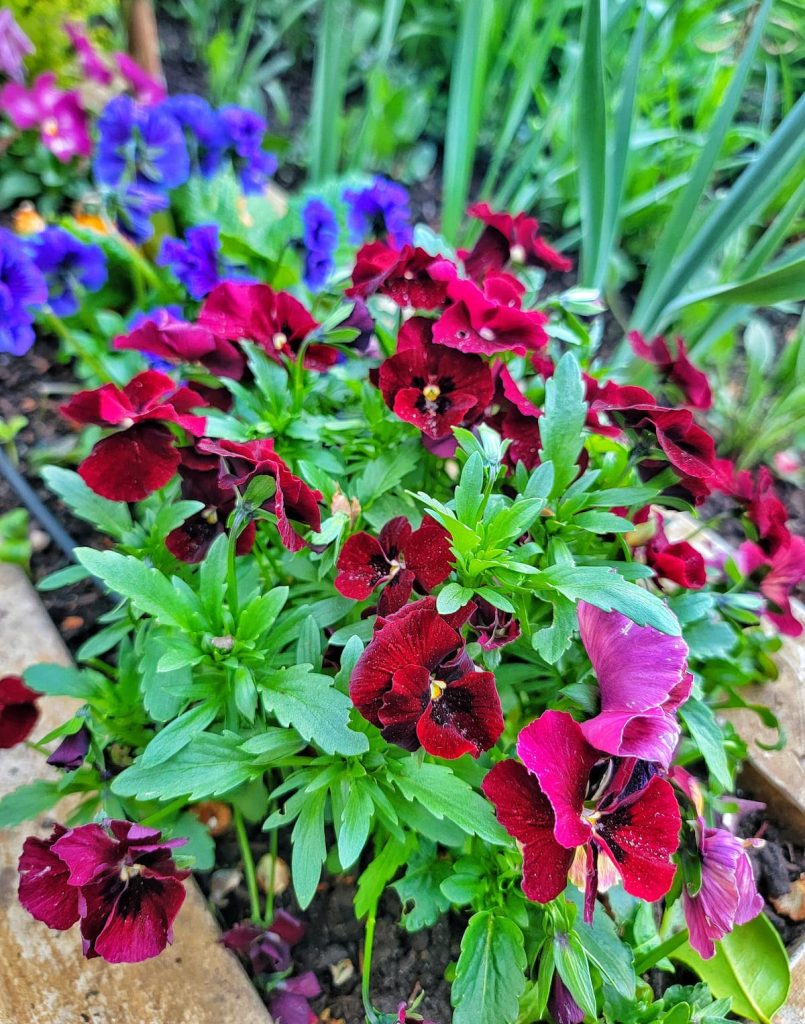
5. Pansies / Violas
These pretty flowers are great for cooler climates and can bloom in the spring and fall. They come in many colors and patterns.
Pansies are a great choice for adding color to gardens during cooler months. They are perfect for container gardens and window boxes.
Pansy Quick Facts
| Typical Bloom Time | typically in spring and fall; can also bloom throughout the winter in mild climates |
| USDA Hardiness Zone | 7 to 11; grown as perennials in zones with mild winters |
| Sunlight Requirements | 6 hours of direct sunlight daily; in warmer climates, protect during the hottest part of the day with some shade |
| Height | 6 to 9 inches tall |
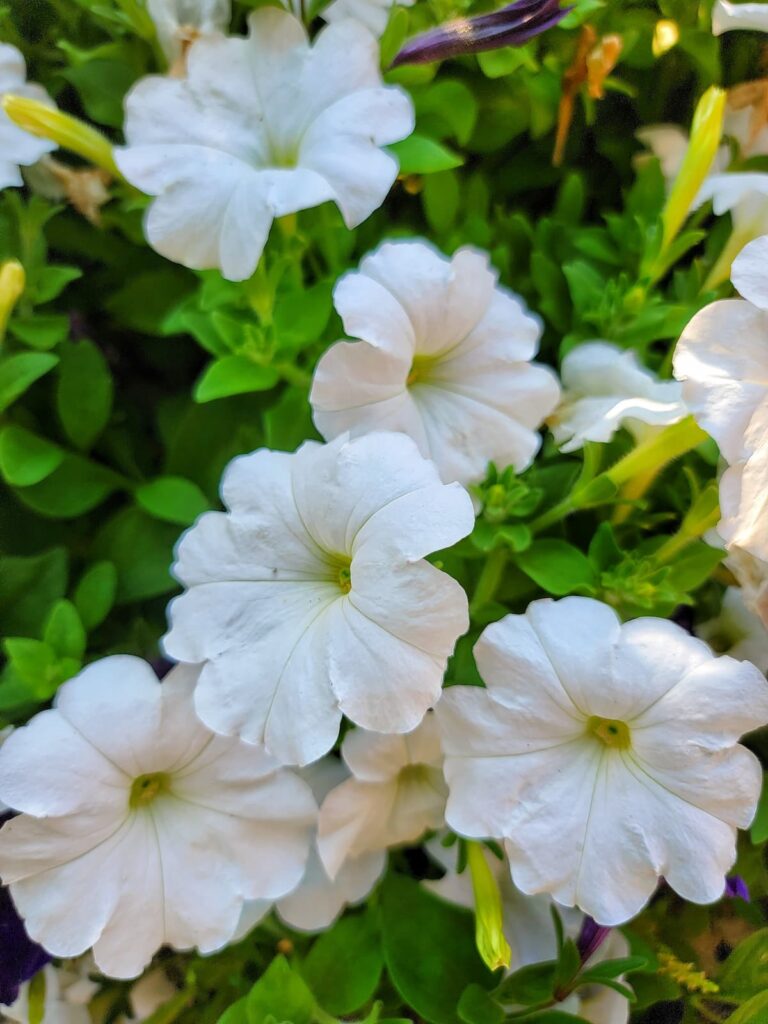
6. Petunias
These flower favorites provide vibrant-colored blooms all summer long. They’re perfect for growing in hanging baskets, containers, and garden beds as ground cover.
Petunias are popular for their wide range of colors and patterns and ability to quickly fill spaces. To thrive, they require a sunny spot in the garden, regular watering, and occasional feeding.
Petunia Quick Facts
| Typical Bloom Time | spring until frost |
| USDA Hardiness Zone | annuals, but they are perennial in zones 10-11 |
| Sunlight Requirements | 6 hours of direct sunlight daily |
| Height | dwarf varieties may only reach about 6-12 inches in height, while some trailing types can grow much longer, up to 3-4 feet, especially if given support or allowed to spread on the ground. |
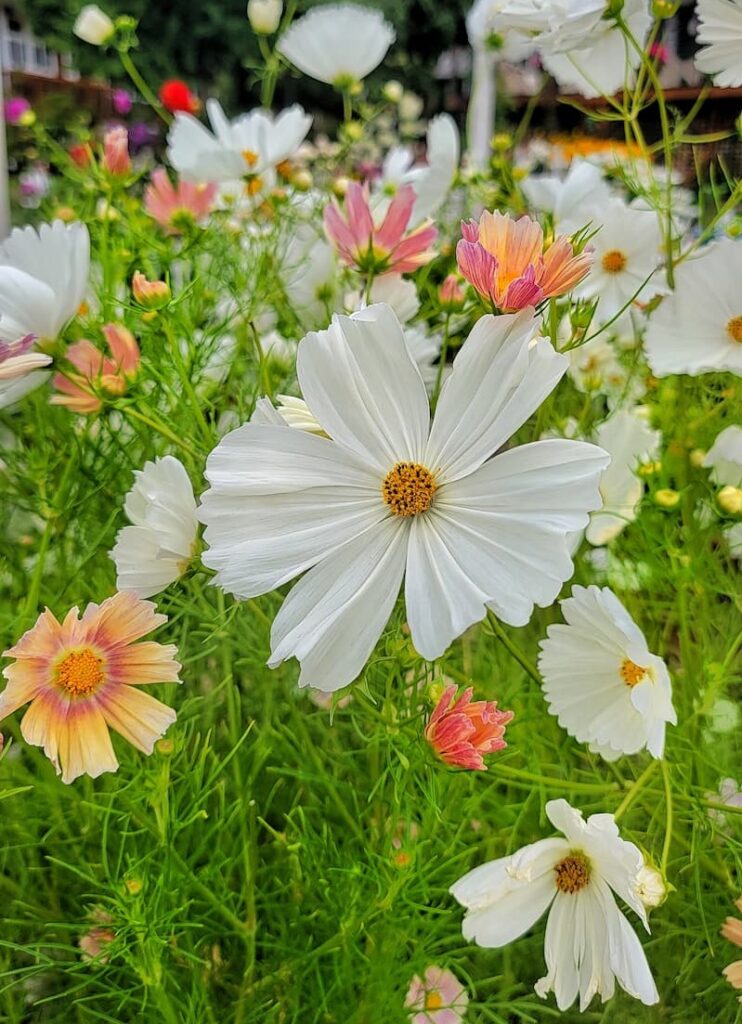
7. Cosmos
Cosmos are summer flowers that are easy to grow from seeds. They are excellent choices for adding height and color to flower beds and are popular in wildflower gardens because they attract pollinators such as bees and butterflies.
These annual plants have delicate daisy-like blooms in shades of pink, white, and burgundy. Their fern-like foliage will add interest to your summer flower arrangements.
Cosmos can tolerate both dry soil and neglect. The most time-consuming part of growing these whimsical flowers is the deadheading process. But it’s worth it because the more you cut, the more flowers they produce throughout the growing season.
Cosmo Quick Facts
| Typical Bloom Time | early summer and continue to produce flowers until the first frost |
| USDA Hardiness Zone | 2-11 |
| Sunlight Requirements | 6-8 hours of direct sunlight daily |
| Height | dwarf varieties might grow about 1-2 feet tall, while taller varieties can reach up to 4-6 feet tall |
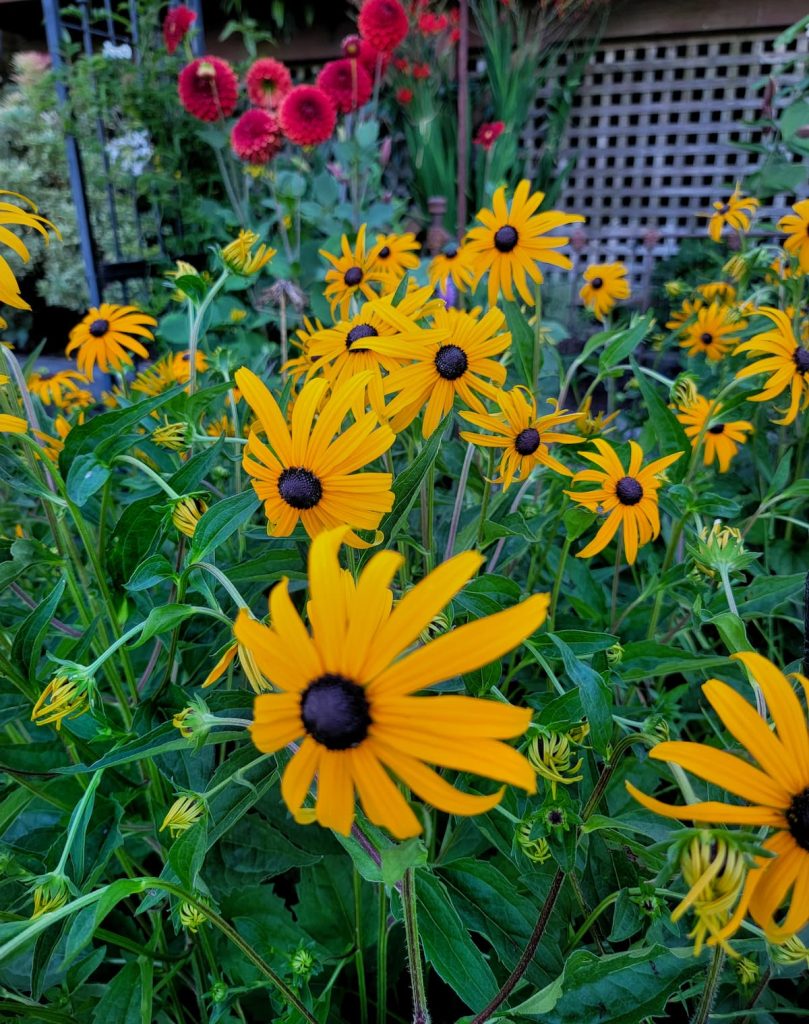
8. Black-Eyed Susans (Rudbeckia)
Black-eyed Susans, with their bright yellow flowers and distinctive dark brown center, are a popular garden choice for beginners.
Their bright color livens up your summer garden while attracting pollinators such as bees and butterflies. Black-eyed Susans also make excellent cut flowers for arrangements.
Once established, they are easy plants that can thrive in poor soil and drought conditions.
Black-Eyed Susan Quick Facts
| Typical Bloom Time | early summer to fall |
| USDA Hardiness Zone | 3-9 |
| Sunlight Requirements | 6 hours of direct sunlight daily |
| Height | 1 and 3 feet tall, with some varieties reaching up to 4 feet. |
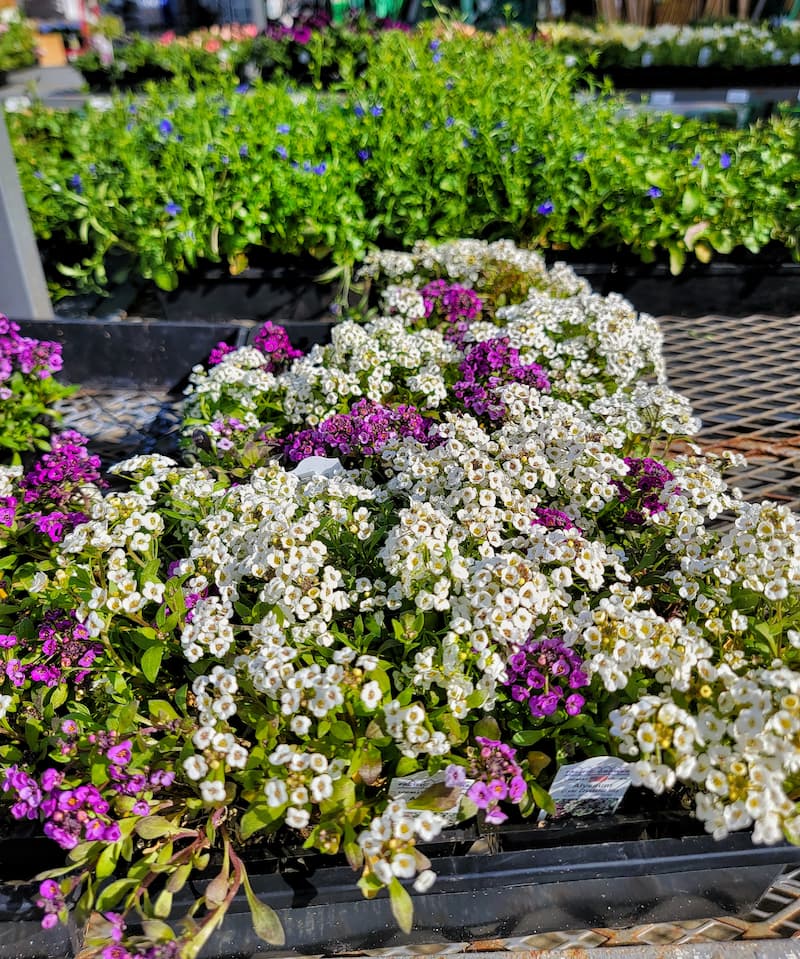
9. Sweet Alyssum
My favorite thing about this plant is its honey-scented flowers, which attract beneficial insects. Sweet alyssum can be planted in garden borders, rock gardens, and hanging baskets, where its blooms spill over the edges beautifully.
Sweet Alyssum Quick Facts
| Typical Bloom Time | spring through fall; can continue to flower through the winter in milder climates |
| USDA Hardiness Zone | 9-11 |
| Sunlight Requirements | prefers full sun but will tolerate partial shade, especially in hotter climates |
| Height | typically reaching heights of 4 to 6 inches, but it can spread up to 9-12 inches wide |
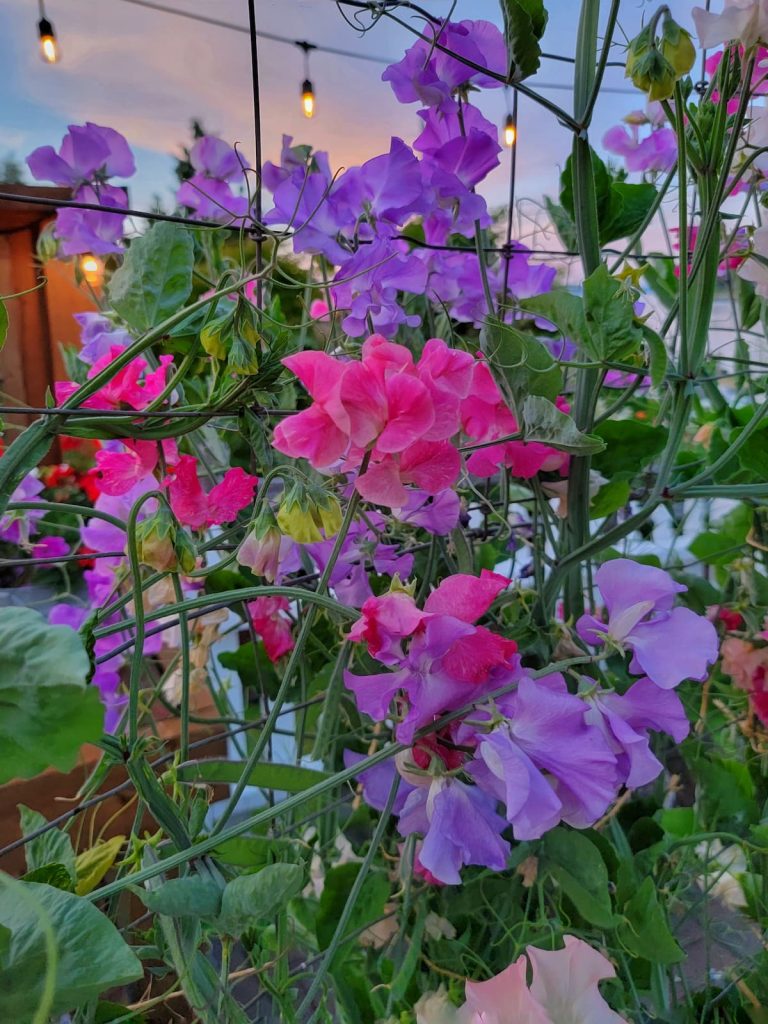
10. Sweet Peas
One of my garden favorites is fragrant sweet peas, which make excellent cut flowers. They’re climbing flowers that can be grown on trellises or arbors.
There are many different varieties with the most gorgeous shades of pink, white, purple, and more.
Sweet peas have a shorter growing season, but regular watering and cooler temperatures help prolong their blooming time.
Sweet Pea Quick Facts
| Typical Bloom Time | late spring and early summer |
| USDA Hardiness Zone | 2-11 |
| Sunlight Requirements | 6 hours of direct sunlight daily. |
| Height | can reach heights of 6 feet or more if provided with adequate support such as trellises or fences |
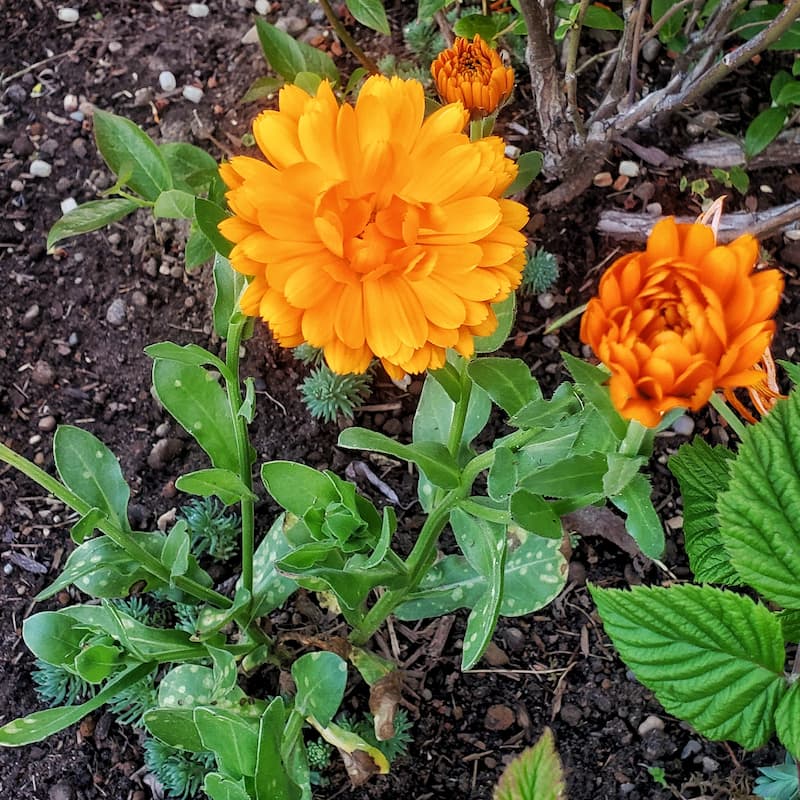
11. Calendulas
Calendulas are known for their bright, cheerful flowers ranging from bright yellow to deep orange.
Calendulas are easy to grow from seed and often self-sow, making them a low-maintenance choice for adding color to the garden. They are edible and commonly used as a decorative garnish in salads and other dishes.
Calendula Quick Facts
| Typical Bloom Time | early spring through fall; can continue to bloom through the winter in mild winter climates |
| USDA Hardiness Zone | 2-11; they can tolerate a bit of frost |
| Sunlight Requirements | prefer full sun but can tolerate partial shade, especially in hotter climates for protection from the intense afternoon sun. |
| Height | 1 to 2 feet tall |
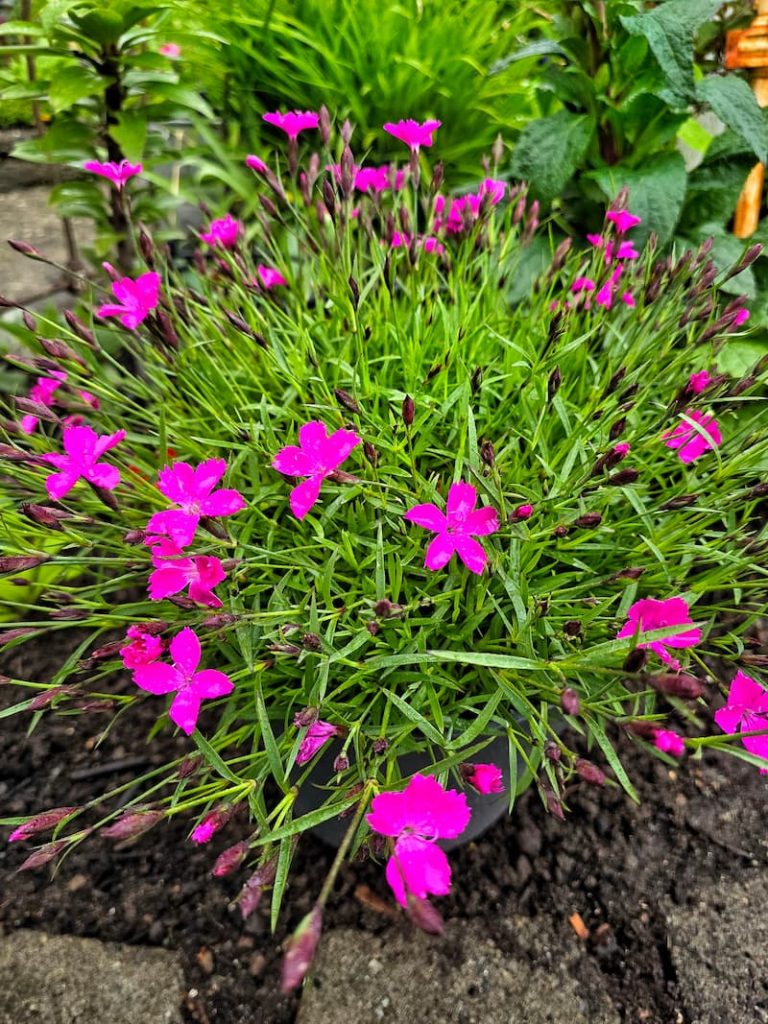
12. Dianthuses
These fragrant, frilled flowers come in shades of pink, red, and white.
Dianthuses are popular in rock gardens, borders, and edging plants. Their long-lasting cut flowers are excellent for arrangements.
Dianthuses Quick Facts
| Typical Bloom Time | late spring to early summer; many varieties will continue to bloom intermittently throughout the summer and into the fall if deadheaded regularly |
| USDA Hardiness Zone | 3-9 |
| Sunlight Requirements | 6 hours of direct sunlight daily |
| Height | 6 inches to 2 feet tall |
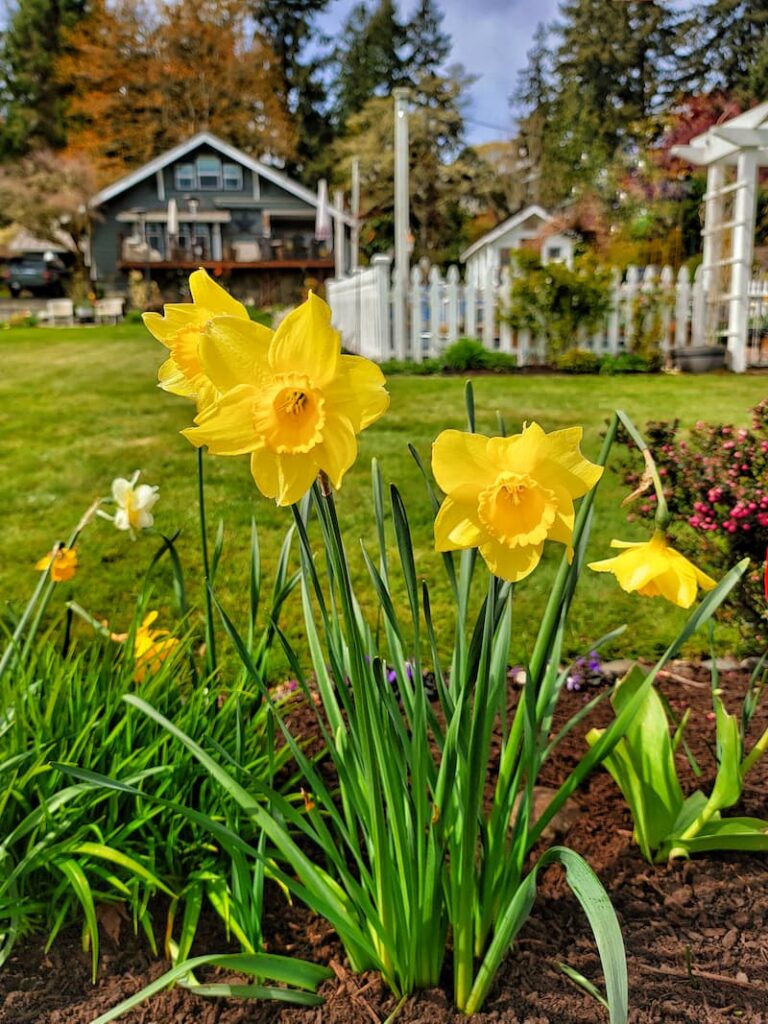
13. Daffodils
Can you imagine a more bright and cheerful spring flower than a cheery daffodil? These garden plants pop up just when we need them in early spring. And they’re among the few flowers growing in the garden even before the last frost date.
Daffodils come in shades of yellow, white, orange, and pink. They are excellent for naturalizing in lawns, borders, and wooded areas because they tend to multiply and come back year after year with minimal care.
Daffodil Quick Facts
| Typical Bloom Time | early to mid-spring; they can start blooming as early as late winter in some regions |
| USDA Hardiness Zone | 3-9; they require a period of cold dormancy |
| Sunlight Requirements | 6 hours of direct sunlight daily |
| Height | 6 inches to 2 feet tall |
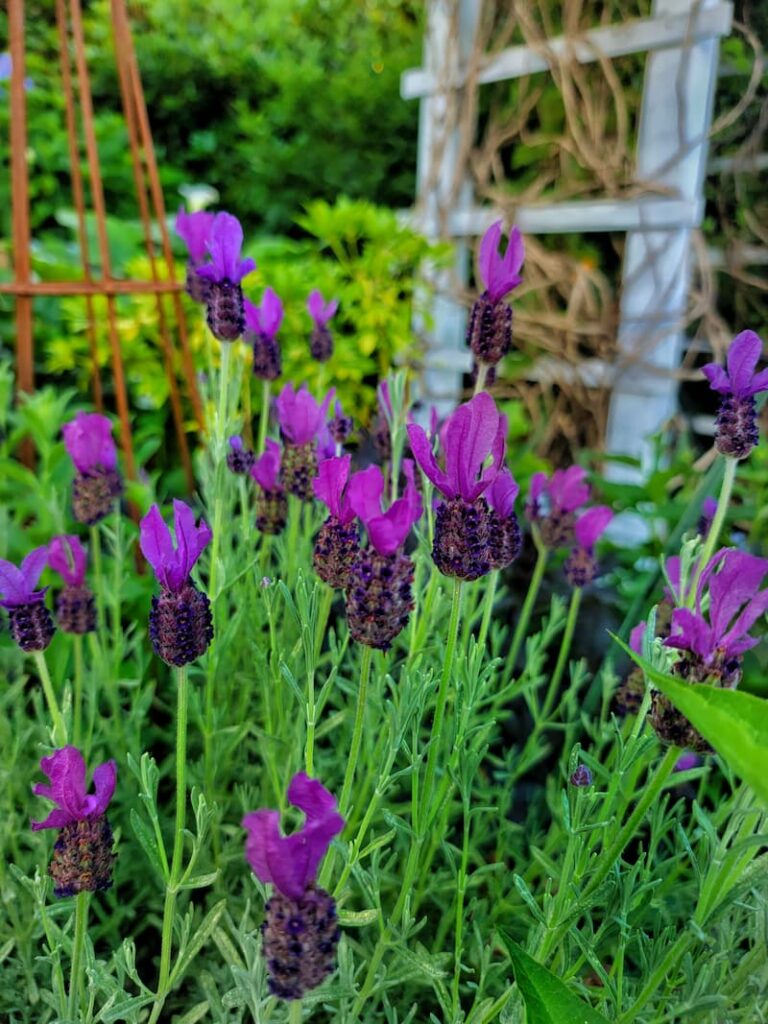
14. Lavender
I’m all about the fragrance of a lavender plant, and others love lavender’s numerous uses, such as in cooking, crafting, and herbal remedies.
Once established, this full-sun perennial prefers well-drained soil and minimal watering.
Lavender Quick Facts
| Typical Bloom Time | late spring to early summer |
| USDA Hardiness Zone | USDA hardiness zones 5-9 |
| Sunlight Requirements | at least 6-8 hours of direct sunlight each day. The intense sun helps to develop the oils that give lavender its fragrance and flavor. |
| Height | can range from about 1 to 3 feet in height. |
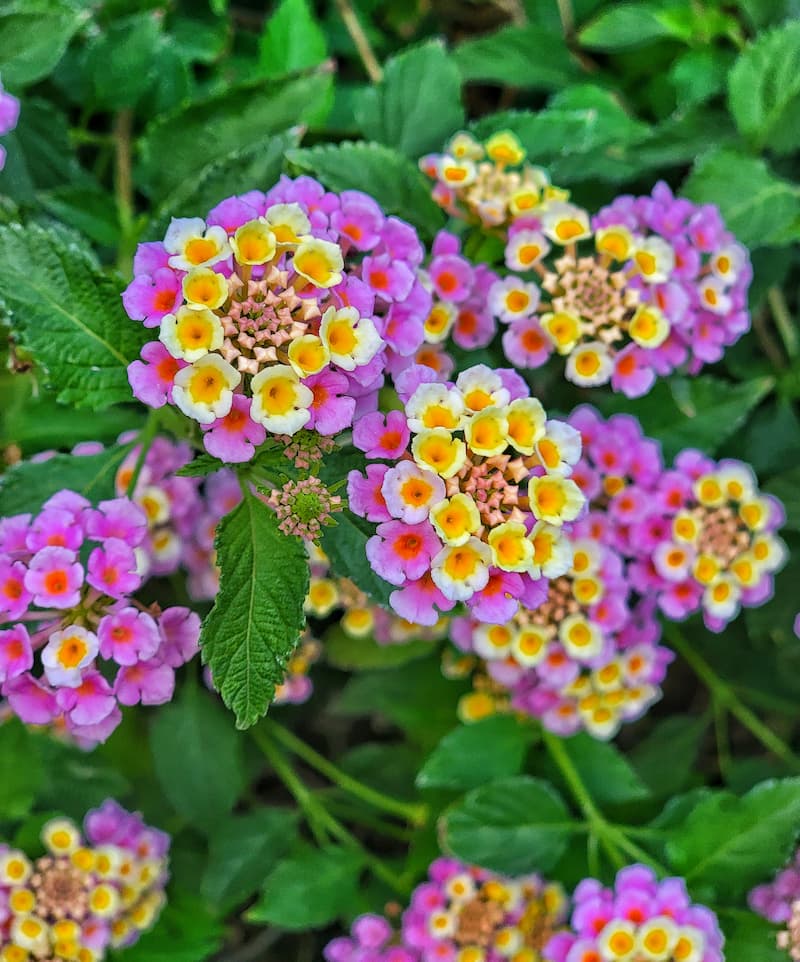
15. Lantana
Lantana is popular because its multicolored clusters of flowers attract butterflies and other pollinators.
Its drought tolerance and ability to thrive in poor soil make it a low-maintenance choice for challenging growing conditions.
Lantana Quick Facts
| Typical Bloom Time | continuously from spring through fall |
| USDA Hardiness Zone | 9-11 as a perennial; can be grown as an annual in cooler climates |
| Sunlight Requirements | 6-8 hours of direct sunlight daily |
| Height | some groundcover types stay around 1 foot tall, while bushier forms can grow up to 6 feet in height if not pruned back |
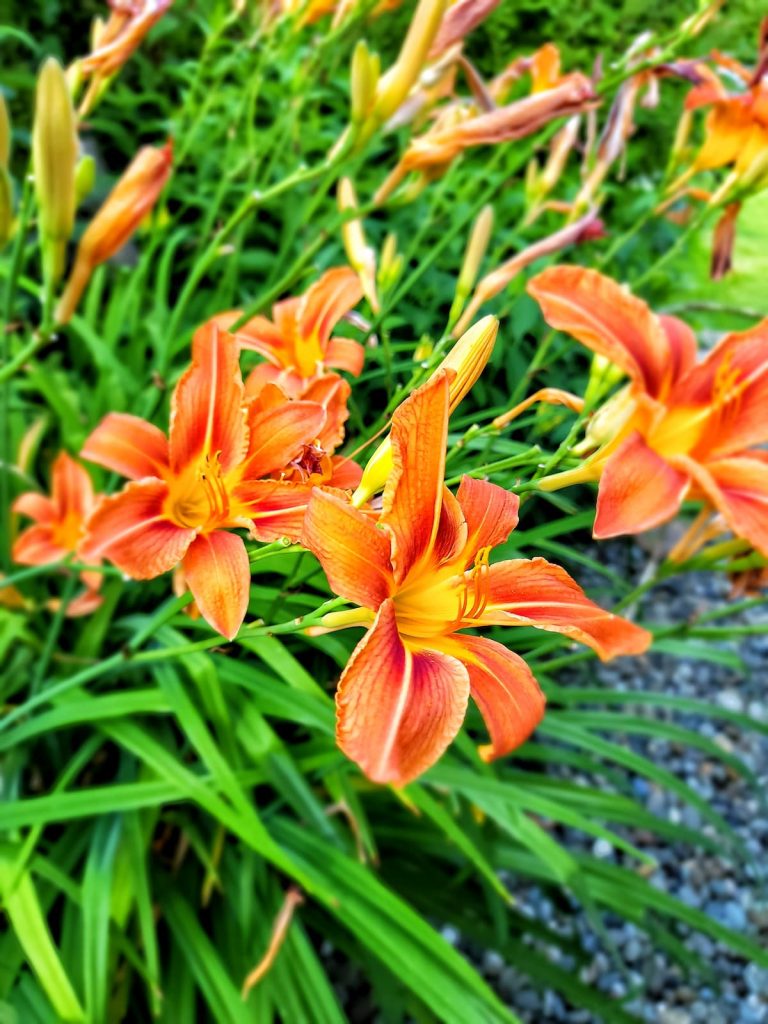
16. Daylilies (Hemerocallis)
Daylilies are loved for their vibrant blooms and ease of care. Once established, they are extremely versatile, drought-tolerant, and excellent for mass planting, borders, and ground cover.
Daylilies have edible flowers that can add a colorful touch to salads and desserts.
Daylily Quick Facts
| Typical Bloom Time | early summer to mid-summer; some varieties are known as rebloomers, providing a second round of flowers later in the season |
| USDA Hardiness Zone | 3-9 |
| Sunlight Requirements | 6 hours of direct sunlight daily |
| Height | 1 to 4 feet |
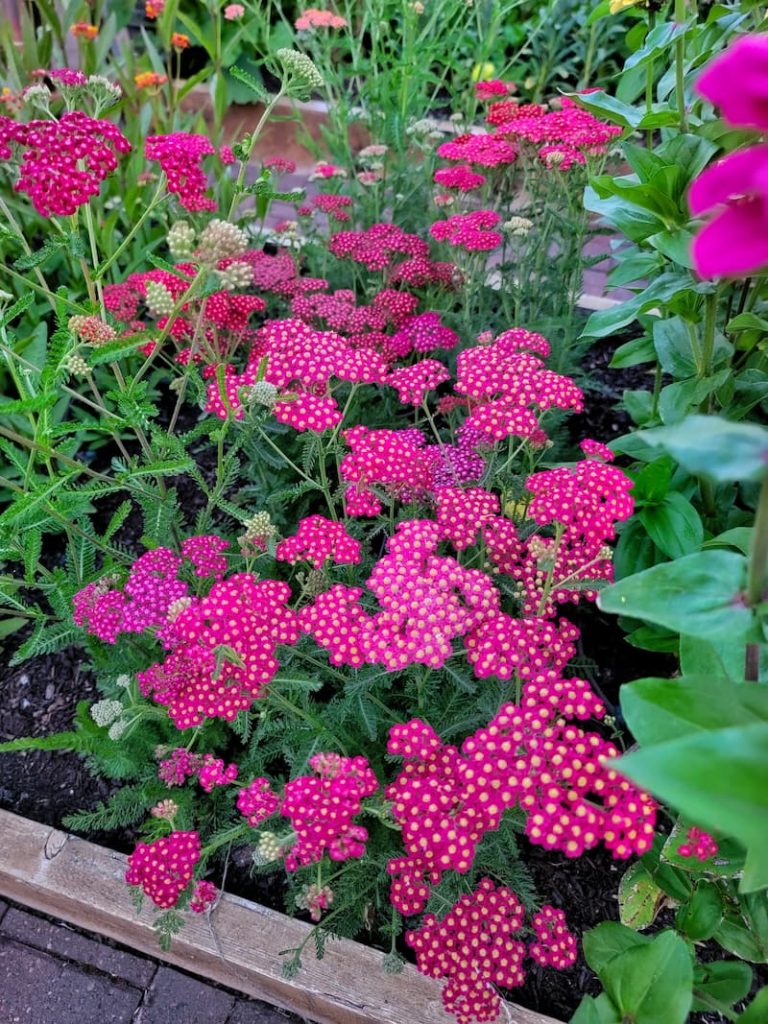
17. Yarrow
Due to its dense, mat-forming growth habit, yarrow is often used in wildflower meadows and borders and as a filler in garden beds. My favorite part about yarrow is its fern-like foliage that adds so much interest to my cut flower garden.
This whimsical garden flower is also known for its medicinal properties and is used in herbal remedies.
Yarrow Quick Facts
| Typical Bloom Time | early summer to early fall |
| USDA Hardiness Zone | 3-9 |
| Sunlight Requirements | 6-8 hours of direct sunlight daily |
| Height | 2 to 3 feet |
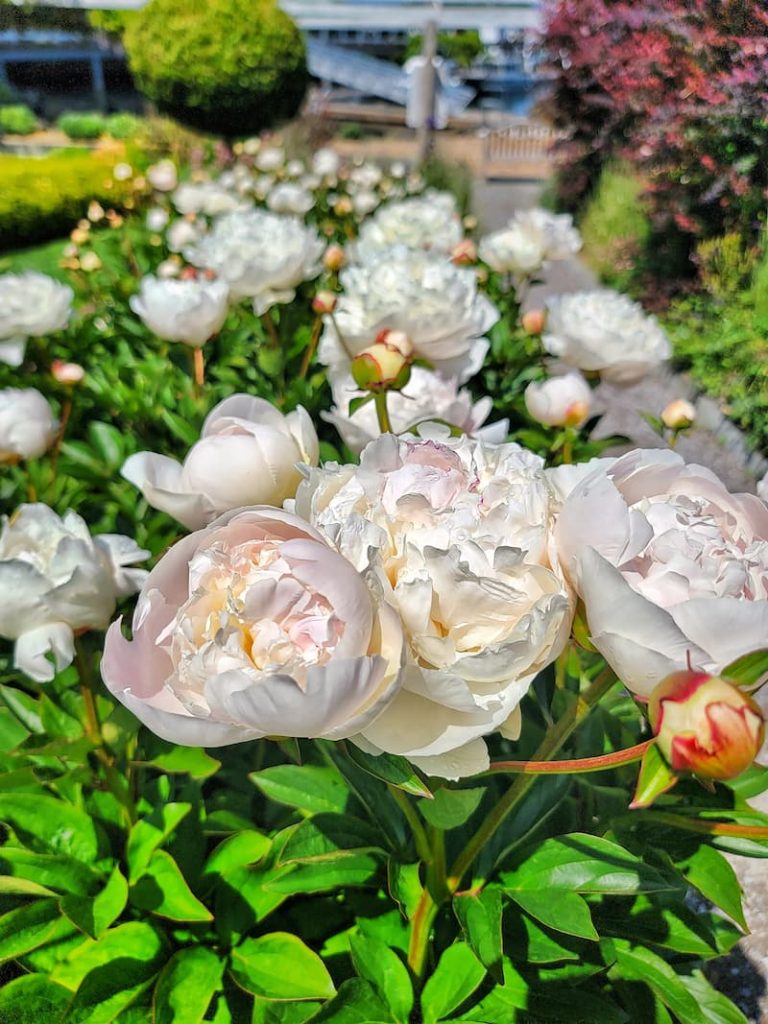
18. Peonies
These long-lived perennials can bloom for decades with minimal care. However, they thrive in fertile, well-drained soil and a spot where they won’t need to be moved for many years.
Peony perennial flowers have stunning, large, lush, and often fragrant blooms, making them amazing additions to gardens and bouquets.
Peony Quick Facts
| Typical Bloom Time | late spring to early summer; each variety has a relatively brief bloom period, lasting about 7-10 days |
| USDA Hardiness Zone | 3-8; they require a cold period during the winter to bloom successfully and may not perform well in regions without a significant winter chill |
| Sunlight Requirements | 6 hours of direct sunlight daily. |
| Height | most herbaceous peonies range from 2 to 3 feet tall; tree peonies, which are woody shrubs, can reach heights of 4 to 7 feet |
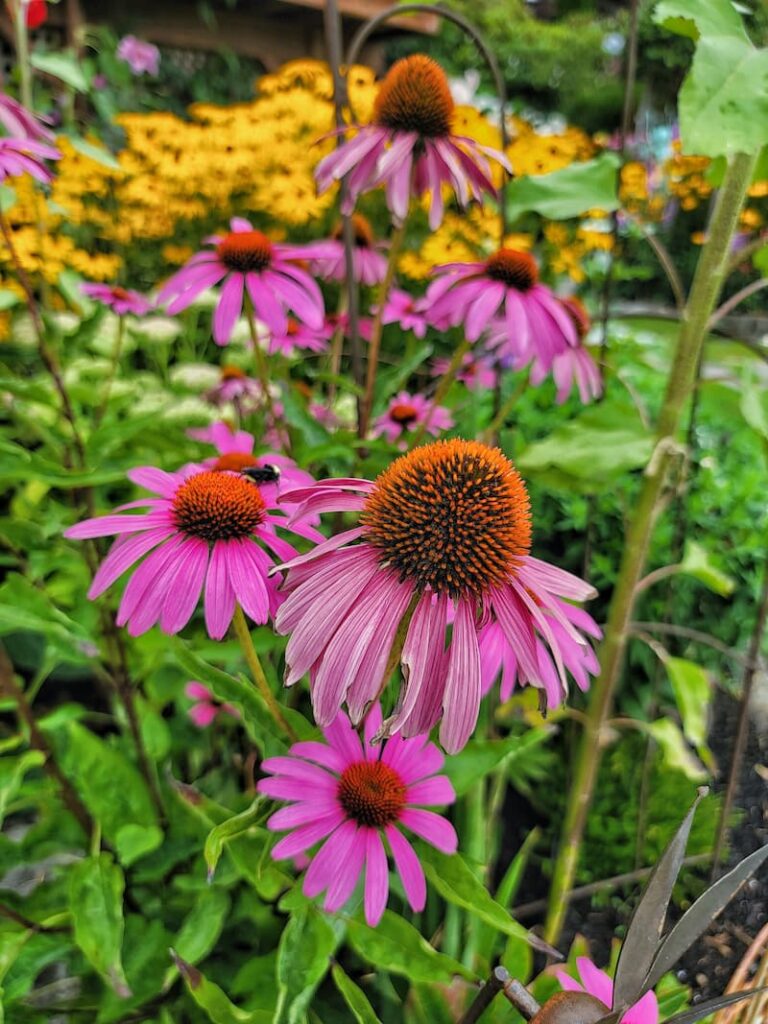
19. Coneflower (Echinacea)
Another perennial plant I cannot live without is the coneflower or echinacea. Their vibrant, daisy-like beautiful blooms with raised centers attract pollinators like bees and butterflies and make great cut flowers for bouquets.
They have a sturdy, upright habit that does not usually require staking, making them even more low-maintenance.
Coneflowers are also used in herbal remedies, particularly Echinacea purpurea, which is noted for its immune-boosting properties.
Coneflower Quick Facts
| Typical Bloom Time | early summer to late summer or early fall |
| USDA Hardiness Zone | 3-9 |
| Sunlight Requirements | 6 hours of direct sunlight daily |
| Height | 2 to 4 feet |
Garden Supplies and Tools
Check out my favorite garden supplies and tools for the growing season. Whether you’re looking for potting soil or deer repellent, you’ll find what I use in my own garden.
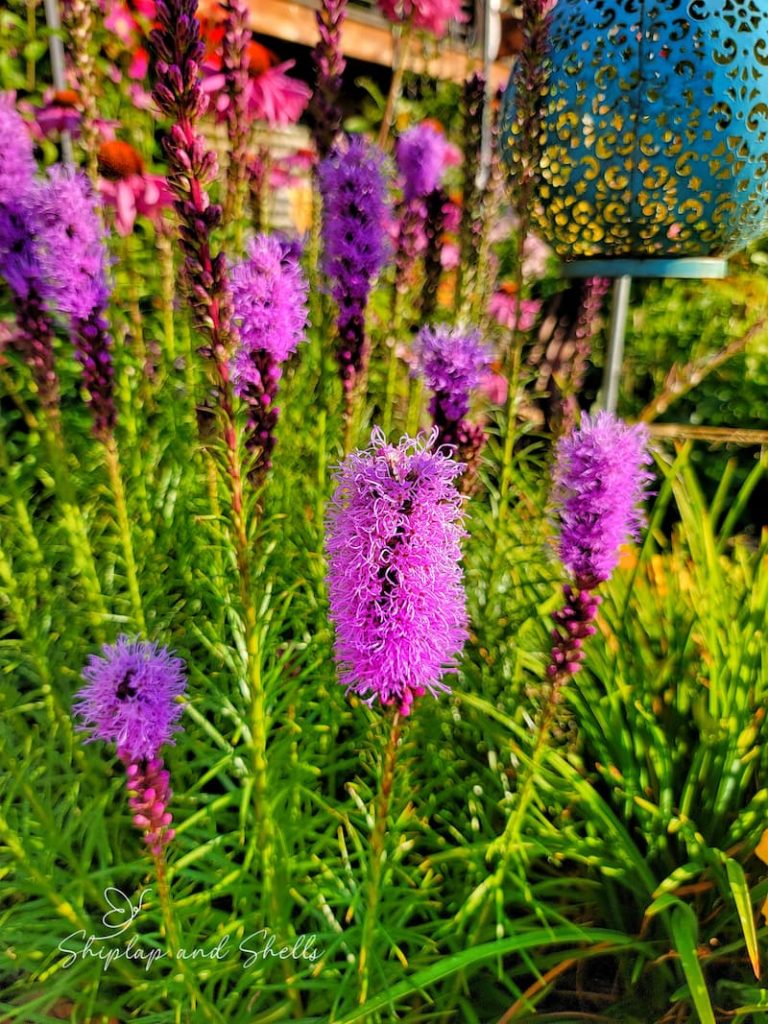
20. Blazing Star (Liatris spicata)
With their unique flower spikes, blazing stars add stunning vertical interest to gardens. They’re especially attractive to butterflies and other pollinators.
Blazing star’s adaptability to various climates and tolerance to winter cold makes them a good garden choice.
Blazing Star Quick Facts
| Typical Bloom Time | mid-summer to fall |
| USDA Hardiness Zone | 3-9 |
| Sunlight Requirements | 6 hours of direct sunlight daily |
| Height | 2 to 4 feet |
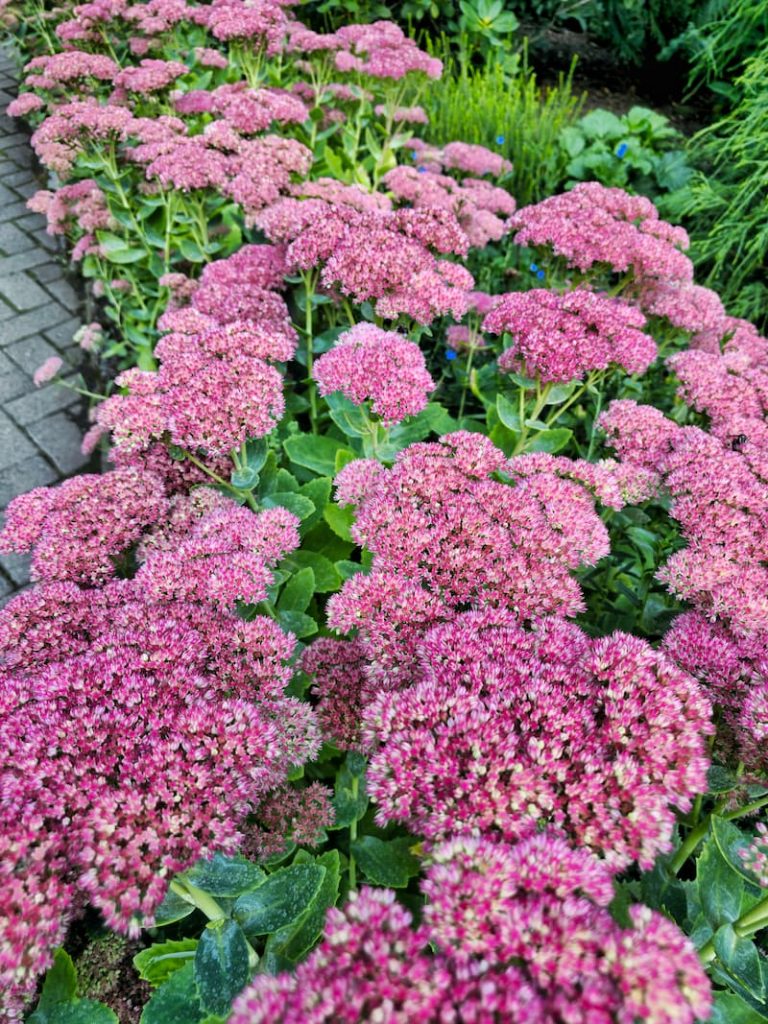
21. Sedum (Stonecrop)
Sedum has succulent leaves, which help the plant conserve water, making it an excellent choice for drought-prone environments. It’s also known for its ease of care and attractive blooms, which attract bees, butterflies, and other pollinators.
I grow one of the sedum tall varieties, Autumn Joy, in my cottage garden. This variety has broccoli-shaped light green flower heads that slowly change to pink and deepen to burgundy. Its late-season blooms provide color when many other plants are fading.
Autumn sedum joy can tolerate partial shade, but their stems may become leggy and their blooms less vibrant without sufficient sunlight.
Sedum Quick Facts
| Typical Bloom Time | late summer to fall |
| USDA Hardiness Zone | 3-9 |
| Sunlight Requirements | 6 hours of direct sunlight daily |
| Height | low-growing groundcover types may only reach a few inches tall, while upright sedums can grow 1 to 3 feet tall. |
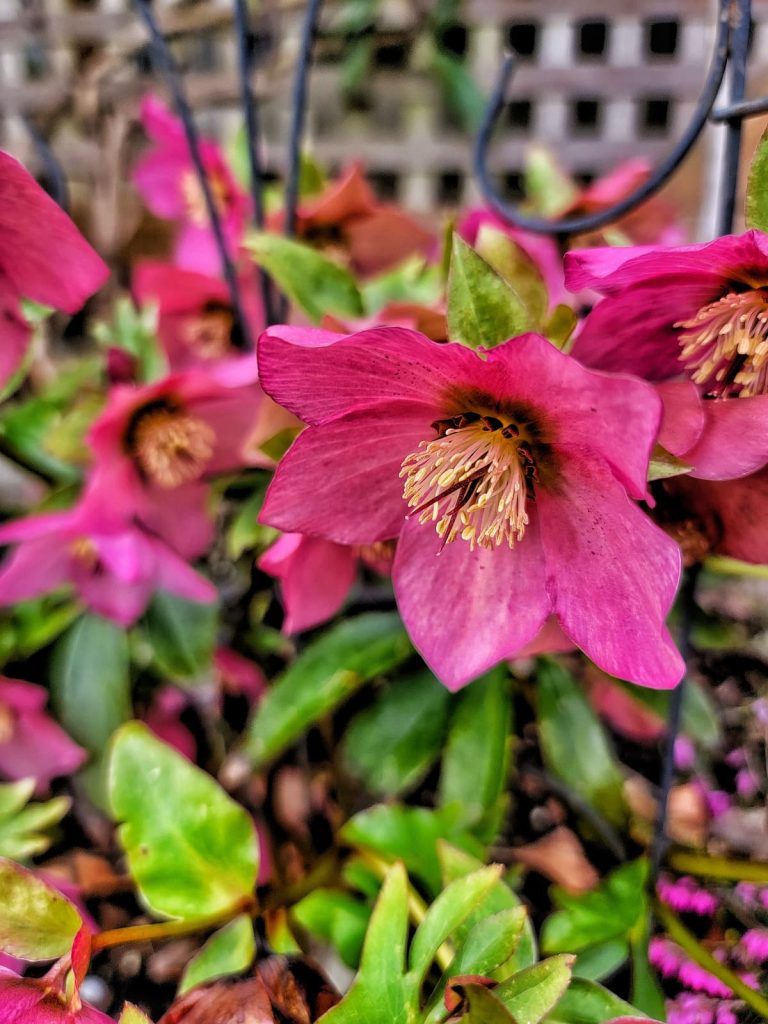
22. Hellbore
Also known as Lenten roses, hellebores are one of the earliest flowers to bloom in the garden. They often have a long bloom time in late winter to early spring. They are quite hardy in cold weather and can bloom even when snow is on the ground.
Hellebores can thrive in shady garden spots where other flowers might struggle. They are also deer and rabbit-resistant, making them a durable choice for woodland settings and shaded borders.
This evergreen plant adds year-round interest to the garden.
Hellebore Quick Facts
| Typical Bloom Time | as early as January and can continue through spring. |
| USDA Hardiness Zone | 4-9 |
| Sunlight Requirements | best in partial shade, particularly in a location shaded by the intense afternoon sun |
| Height | 1 to 1.5 feet |
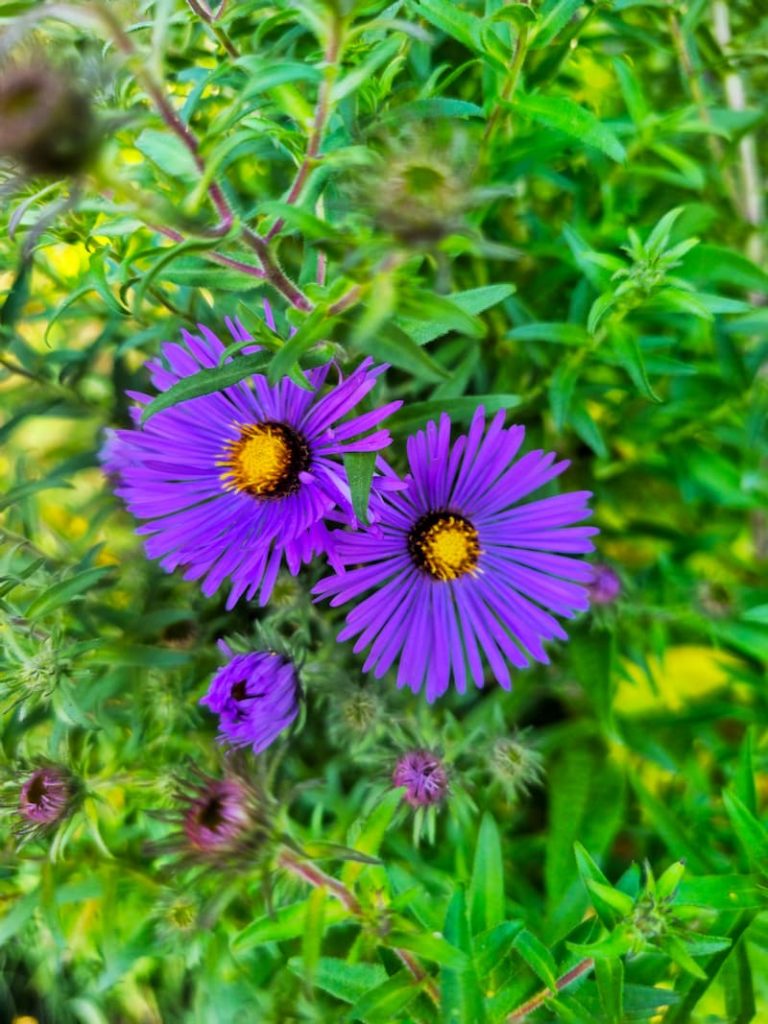
23. Asters
Asters have daisy-like beautiful flowers, which come in shades of blue, purple, red, pink, and white. They are excellent for attracting pollinators such as butterflies and bees, making them a great choice for wildlife gardens.
Asters provide late-season blooms, adding vibrant color to fall landscapes.
Aster Quick Facts
| Typical Bloom Time | late summer to fall |
| USDA Hardiness Zone | 3-8 |
| Sunlight Requirements | 6 hours of direct sunlight daily |
| Height | dwarf varieties might only grow about 1 foot tall, while taller varieties can reach up to 4 feet or more |
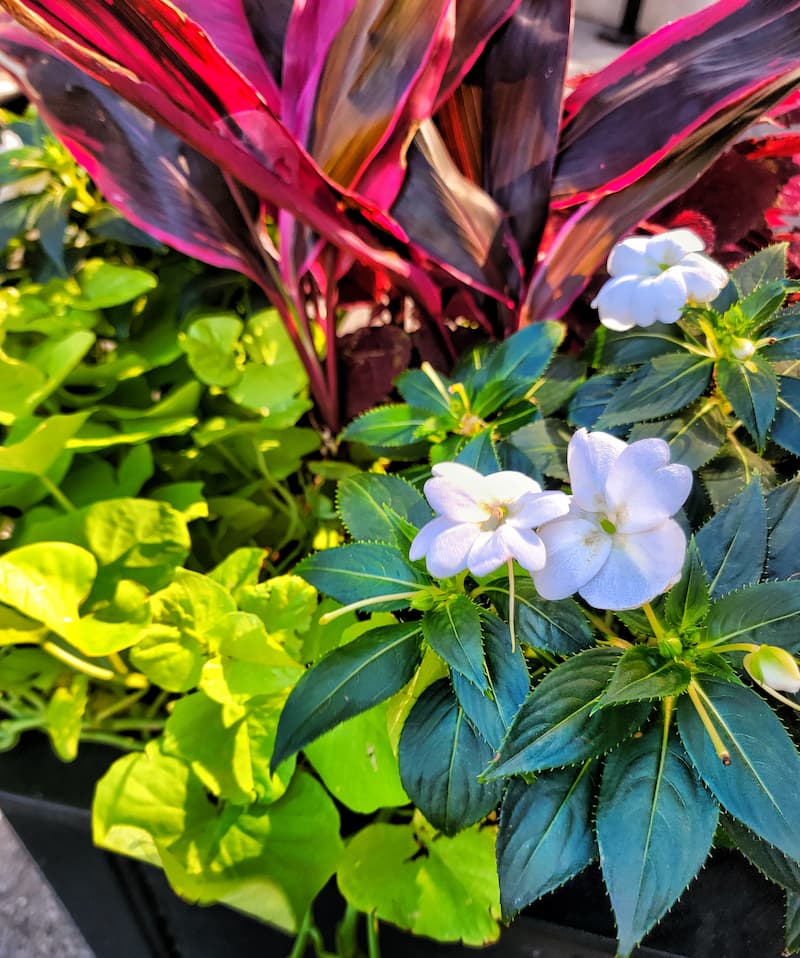
24. Impatiens
Ideal for shady areas, impatiens provide bright, cheerful colors in spots where many plants won’t thrive.
They’re also great for container gardening, hanging baskets, and bedding plants. They add a splash of color with minimal care.
Impatien Quick Facts
| Typical Bloom Time | continuously from spring until frost |
| USDA Hardiness Zone | 10-11 as perennials; typically grown as annuals in colder zones |
| Sunlight Requirements | thrive in partial to full shade |
| Height | 6 to 24 inches |
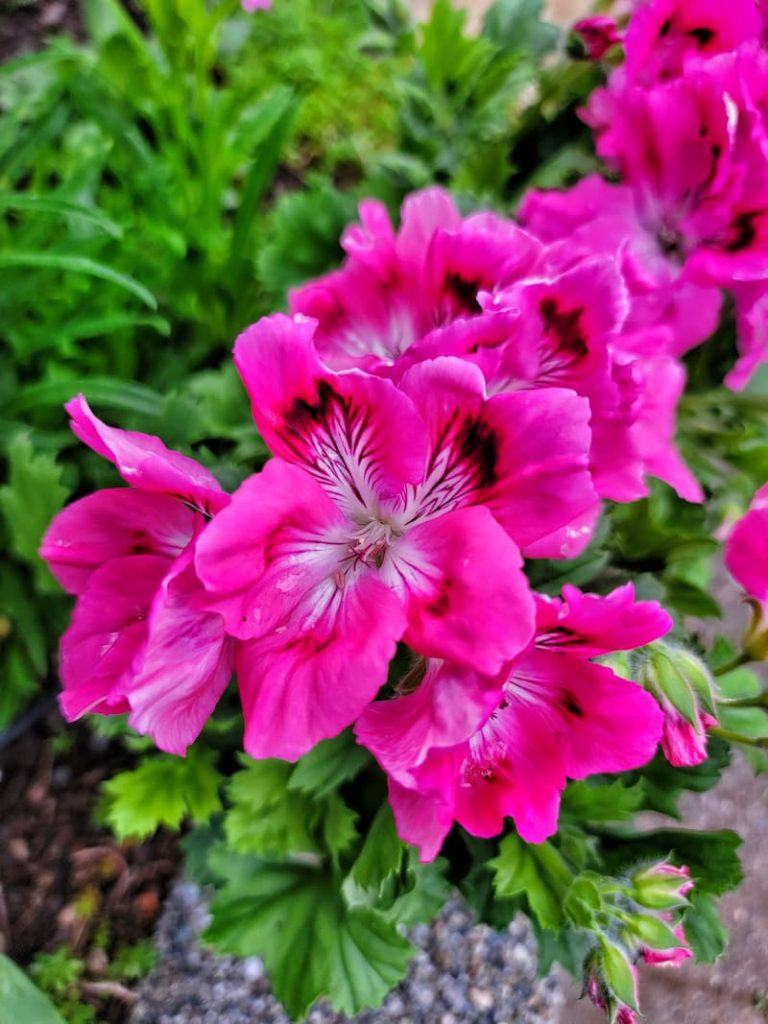
25. Geraniums
Geraniums are durable and easy to grow. They thrive in pots, planters, and directly in the garden. They prefer sunny locations and need minimal watering.
Geraniums are relatively easy to care for, requiring only regular watering and deadheading to remove spent flowers and encourage new blooms.
Geranium Quick Facts
| Typical Bloom Time | spring until frost |
| USDA Hardiness Zone | 10-11 as perennials; annuals in colder climates |
| Sunlight Requirements | 6 hours of direct sunlight daily |
| Height | 6 inches to several feet. The most common garden types typically grow to about 12-24 inches tall |
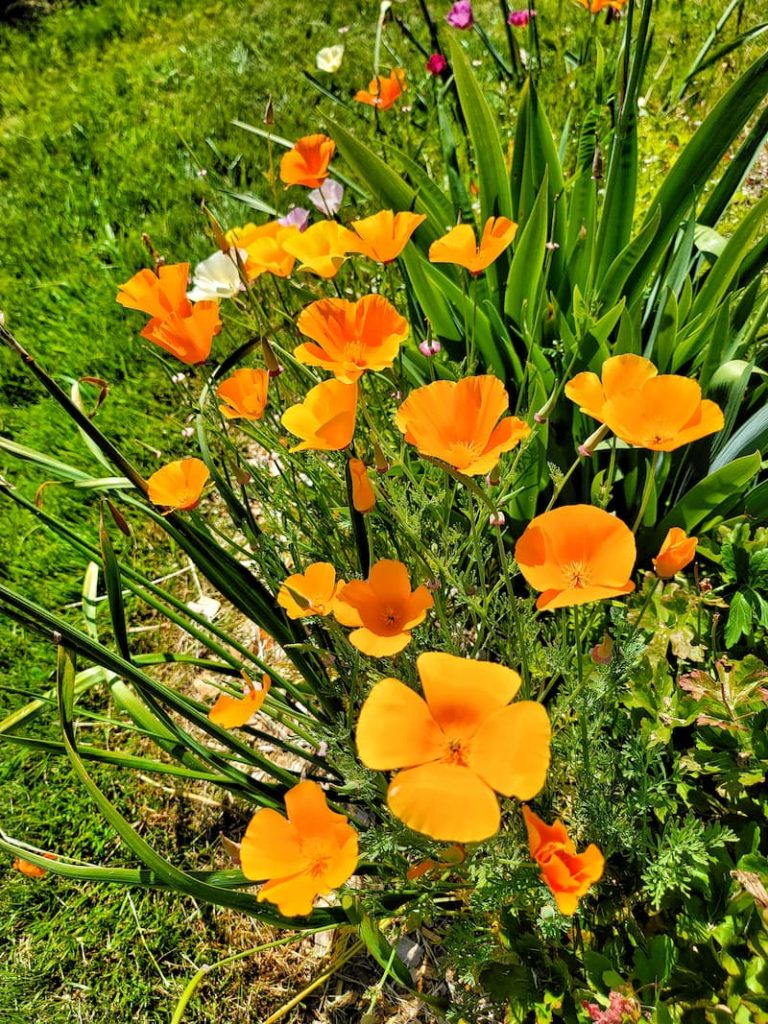
26. California Poppies
The state flower of California, this poppy is drought-resistant and thrives in poor soil, making it perfect for areas with less rainfall.
California poppies are known for their vivid orange flowers, though varieties can also be found in yellow, red, and pink. They’re often used in wildflower mixes, naturalized areas, and rock gardens, where they can thrive with minimal care once established.
Poppy Quick Facts
| Typical Bloom Time | early spring to early summer |
| USDA Hardiness Zone | 8-10 |
| Sunlight Requirements | 6-8 hours of direct sunlight daily |
| Height | they are 12 to 18 inches tall; they have a spreading habit and are often wider than tall |
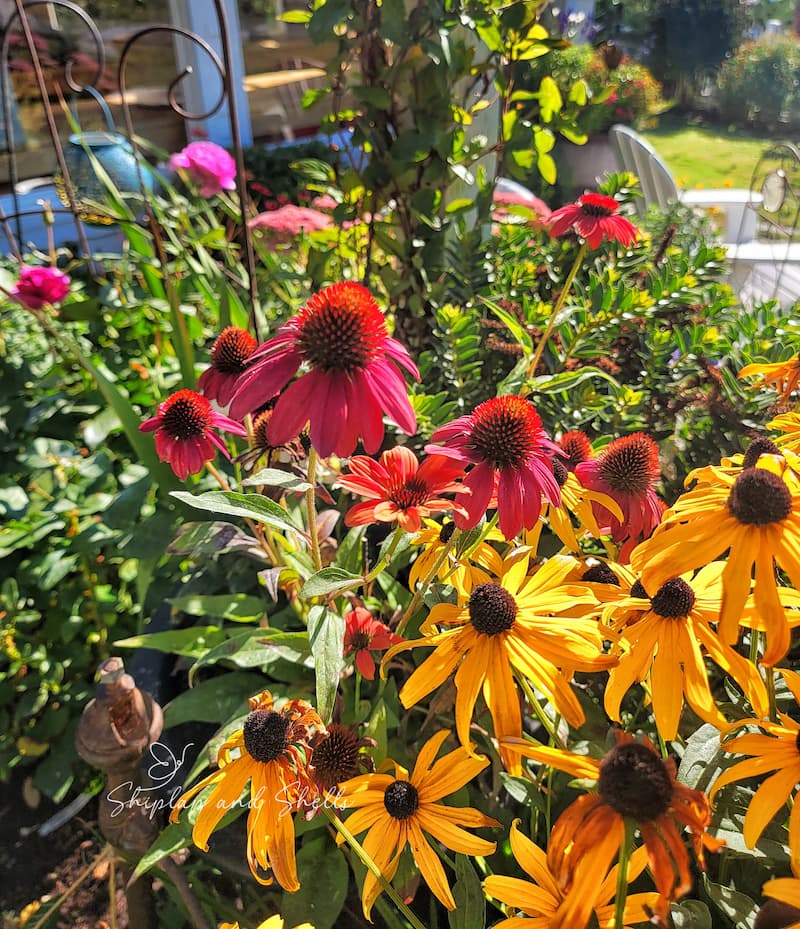
The Easiest Flowers for Specific Growing Conditions
Now that I’ve shared my list of favorite easy flowers to grow in the garden, let’s take a look at which plants do well in specific outdoor spaces.
Easy to Grow Flowers in Pots
These flowers are all relatively easy to care for, making your container gardening colorful. Choose pots with good drainage and use a high-quality potting mix to give your plants the best start.
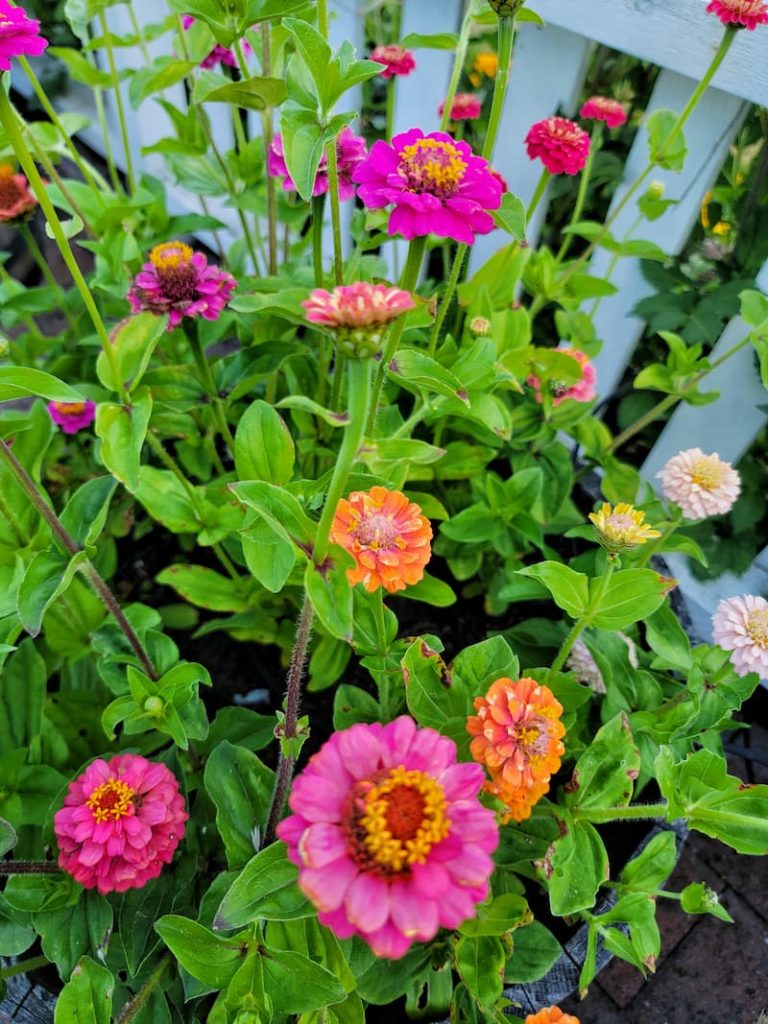
Easy to Grow Flowers for Cutting
When planning a cutting garden, choose a location with plenty of sunlight, as most flowering plants thrive in full sun. Also, remember to plant in well-drained soil and keep your garden well-watered, especially during dry spells.
These flowers are easy to grow and will provide you with beautiful bouquets all season.
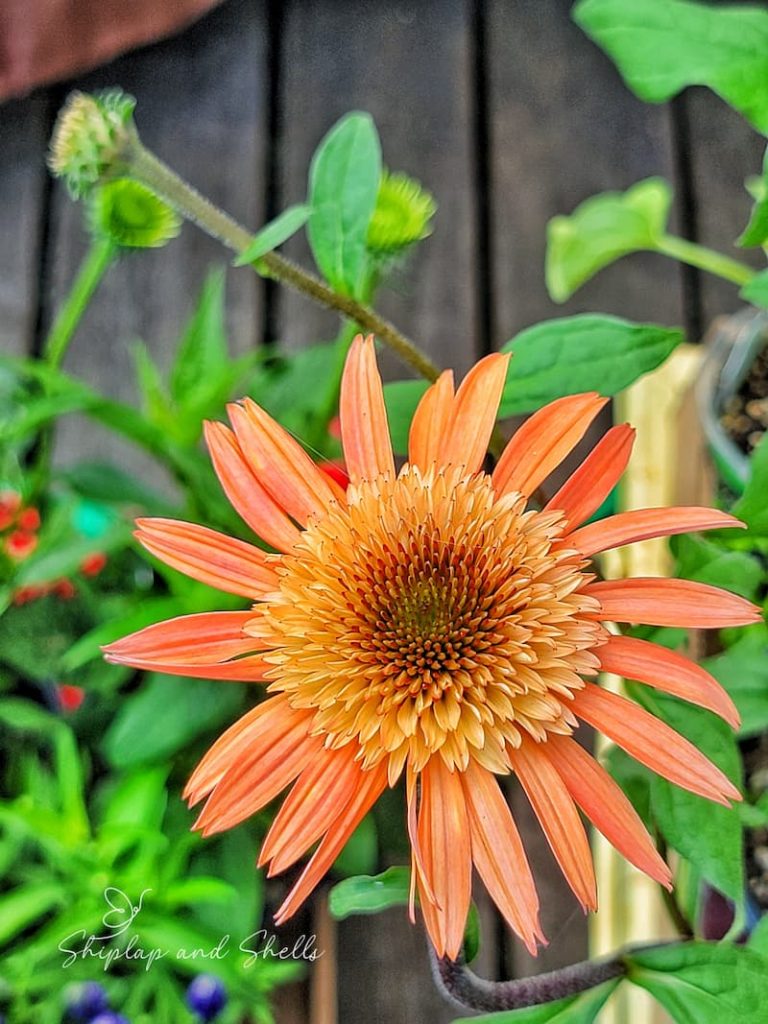
Low Maintenance Perennials
Low-maintenance perennials are ideal for gardeners who want beautiful gardens with minimal upkeep. Here are some of the easiest low-maintenance perennials to grow:
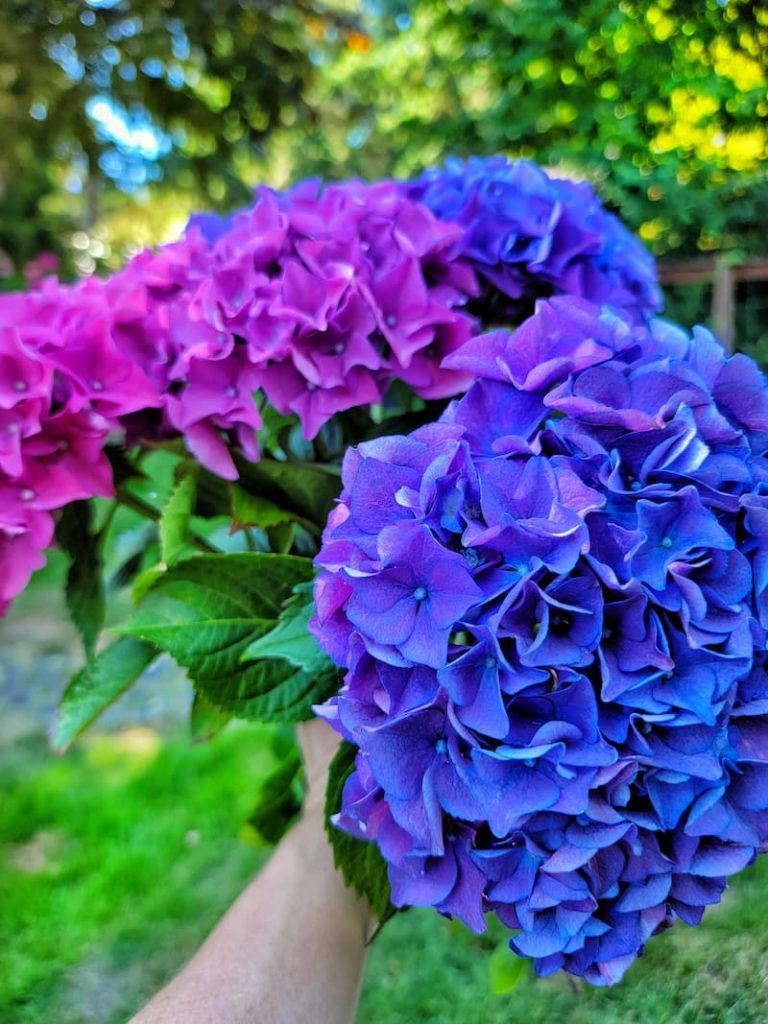
Best Flowers for Shade
You can grow the most beautiful flowers in shade gardens. Here are some of the easiest and best flowers that thrive away from direct sunlight:
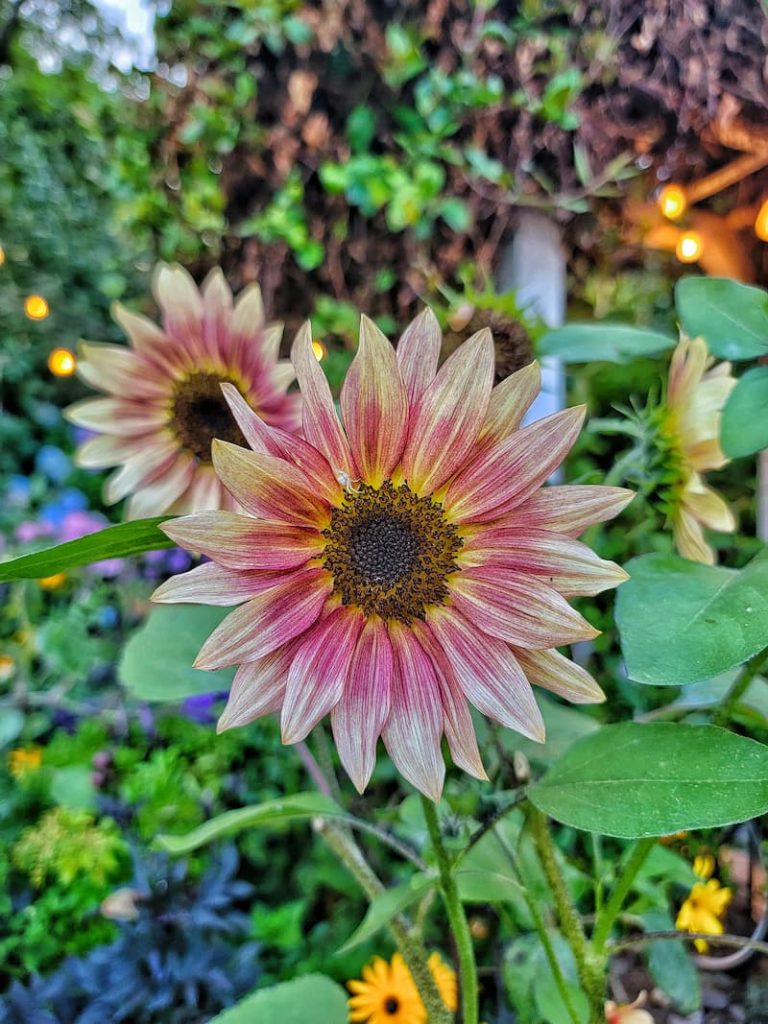
Best Flowers for Full Sun
Flowers that thrive in full sun are great for areas of your garden that receive at least 6 to 8 hours of direct sunlight daily. Here are some of the easiest and best flowers for full sun:
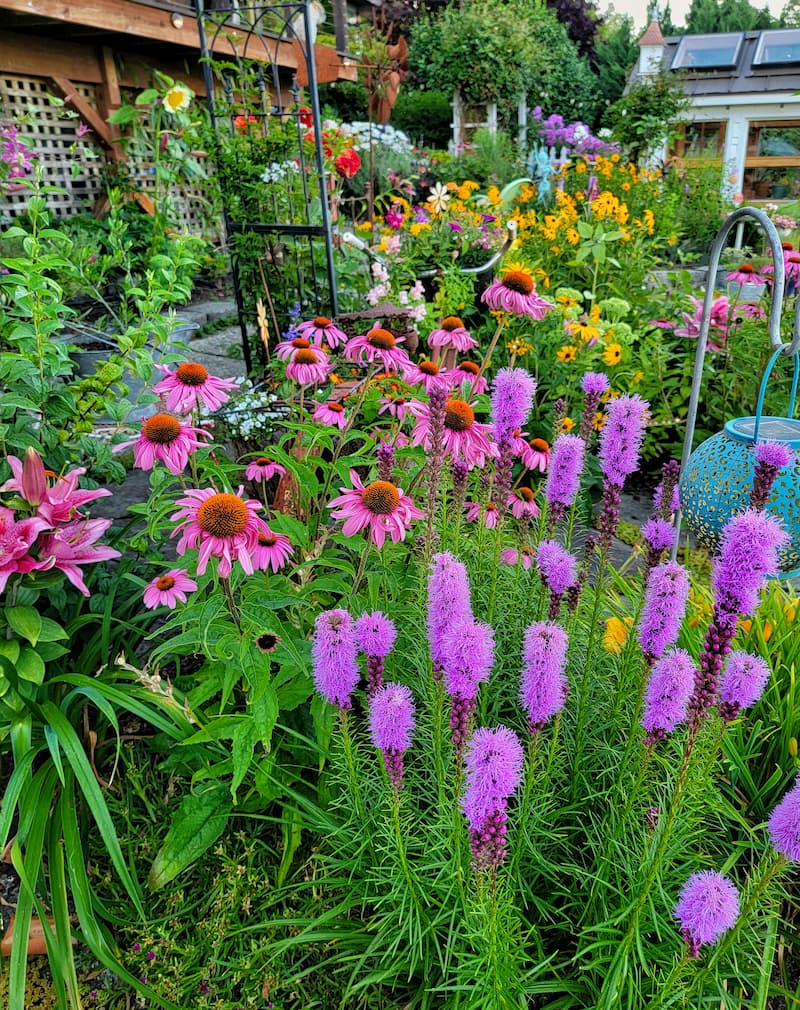
Beginner Gardening Tips for Easy Flowers to Grow
Starting a garden can be an incredible experience, especially when you choose flowers that are easy to grow. Follow along for some beginner tips to help ensure your gardening success.
You can also get more specific tips and information on my blog post for starting a beginner garden.
Choose the Right Flowers
Select flowers known for being easy to grow and suitable for your climate. Choose annual and perennial plants that will thrive in your USDA Hardiness Zone.
Consider sun requirements when choosing the right flowers for your specific outdoor spaces.
Also, know the difference between annual and perennial plants and how each can benefit your garden’s needs.
Test Your Soil
Before planting, testing your soil to understand its pH and nutrient levels is helpful. This can guide you on what amendments you might need to add. Soil testing kits are available at your local garden center or online.
Prepare the Soil
Good soil is the foundation of a healthy garden. Add organic matter like compost to improve soil structure, drainage, and nutrient content. Use a high-quality potting mix for container gardening.
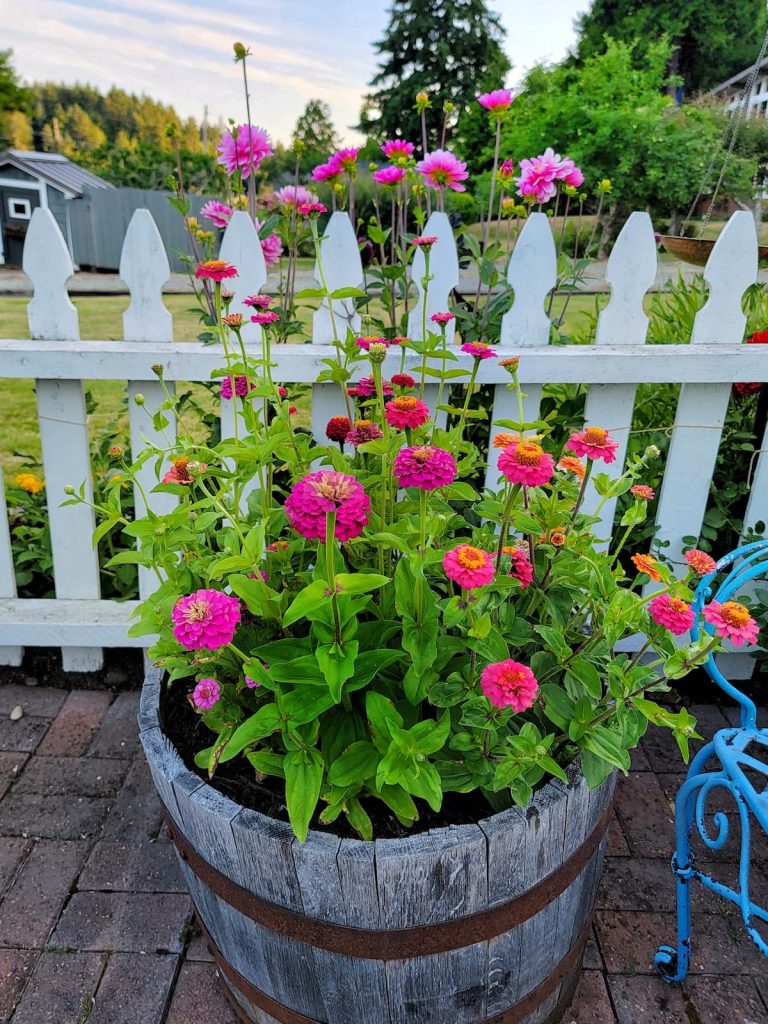
Planting
Read the seed packets or plant tags for specific planting instructions. Generally, seeds should be planted at a depth of about two to three times their width. Ensure spacing as recommended to avoid overcrowding.
Be sure to water your plants before planting them in the garden.
Watering Techniques
Water your plants at the base, keeping the foliage dry to prevent disease. Water deeply but infrequently to encourage strong root growth.
Early morning is the best time to water, as it gives the plants time to absorb moisture before the heat of the day.
Mulching
Apply a layer of mulch around your plants to help retain soil moisture, suppress weeds, and regulate soil temperature. Organic mulches like straw, bark, or shredded leaves are great choices.
Fertilizing
Use a balanced, slow-release fertilizer to give your flowers a steady supply of nutrients. Over-fertilizing can lead to weak growth and fewer blooms, so follow the recommended rates on the product label.
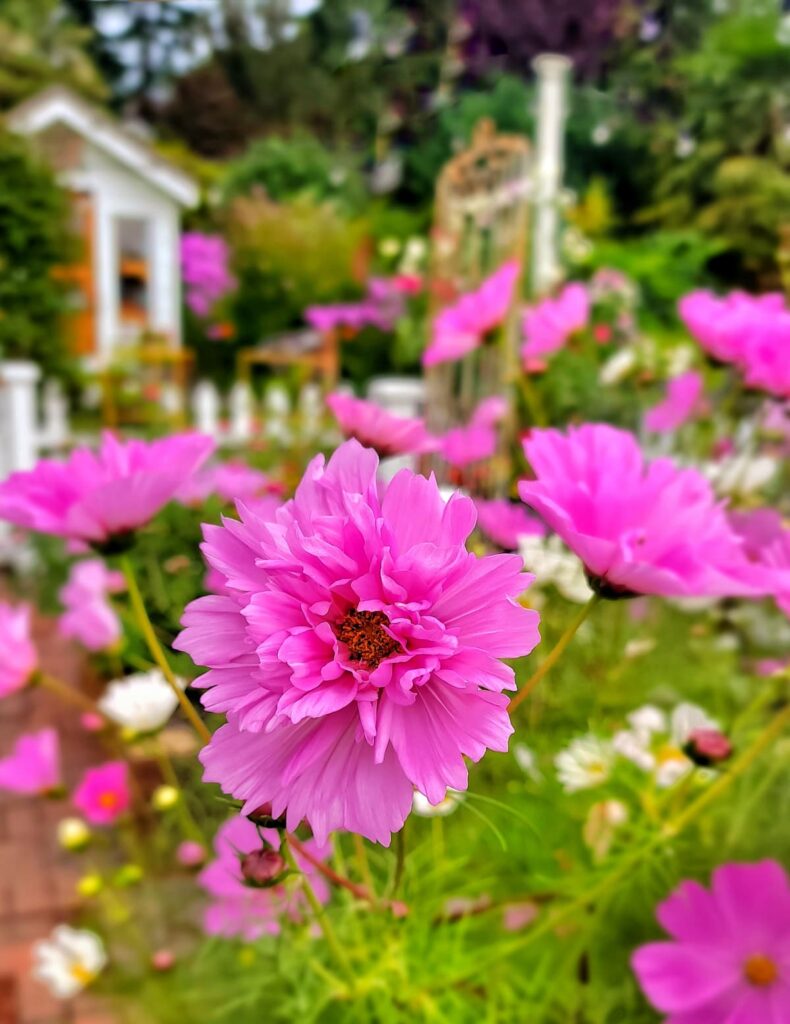
Deadheading
Remove spent flowers regularly (deadheading) to encourage plants to produce more blooms. This keeps the garden looking tidy and can extend the blooming period.
Pest and Disease Management
Monitor plants regularly for signs of pests and diseases. Early detection is key to management. Use environmentally friendly options like insecticidal soap or neem oil for pest control.
Enjoy and Learn
Take time to observe your garden daily. This will help you spot issues early and increase your understanding of how plants grow and respond to your care.
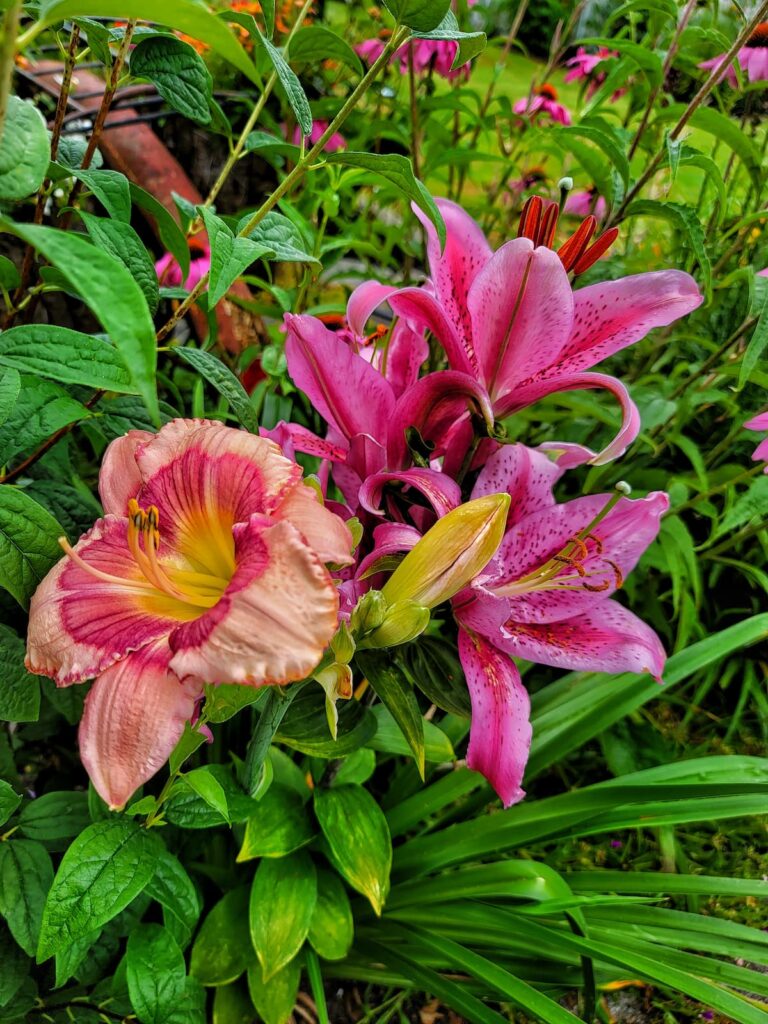
Final Thoughts for Easy Flowers to Grow in the Garden
I hope this has excited and inspired you to grow your garden this year.
With these tips and beginner-friendly flowers, you’re well on your way to a thriving and beautiful garden that offers you a sense of accomplishment and well-being—a place that reflects your personal style and brings color to your everyday life.
If you have any questions or additional suggestions, please share them in the comments below. And be sure to share this blog post link with anyone who may find these gardening tips useful.
Until next time,
Happy Gardening!

I’m a self-taught hobby gardener. Everything I share on my blog is my opinion and what has worked for me.
YOU MAY ALSO
Enjoy These Posts
Follow Me for More Inspiration
Shop my Amazon Storefront, LTK sources, and my favorite home decor, garden, and lifestyle products. When you purchase from one of my links, I earn a small commission, which helps me continue sharing all the content you expect on my blog.
Follow me on Pinterest, Instagram, Facebook, TikTok and LIKEtoKNOW.it. Do you like gardening? Join my Facebook Gardening Tips & Tricks group.

